After that being done, we enjoy the sunshine at the beach promenade. The promenade is lined by a big ferris wheel and some skyscraper-ish buildings, and looks strangely empty to us despite the good weather. As it is the end of May, the big tourist stream probably starts with the beginning of the Russian summer holidays at the beginning of June. Back at the accommodation we do some maintenance work and try our luck with the tires. Loose screws at the luggage carriers are tightened, a rear brake is adjusted and the choke of the DR had gotten stuck during the days on the ferry and now has to be pursuaded to move again. The front tires are quickly changed without problems, but our small mobile compressor does not manage to build up enough pressure to push the new tires completely out of the rim bed. And with the rear tyre the K60 Scout on the Yamaha lives up to its reputation: Even in pairs it cannot be pushed into the rim bed at all. We must probably look for a workshop tomorrow, which can help us here. A bottle of сгущенка and the repeat of the last MotoGP race comfort us for the night.
After we left the ferry and roll through the harbour area gates, we first follow the main road along the coast without a concrete destination in mind in order to get a first impression of the city. The port city of Batumi at the black sea shore is with its almost 150.000 inhabitants the second biggest city of Georgia, and the buildings along the coastal road make a very nice impression. However, we do not intend to stay for a long time, but only want to get some things finished before we leave for the northern part of the country: Get Georgian Sim cards and cash, buy the obligatory insurance for our motorcycles (the green card of the German insurance companies is not valid here and is not accepted) and change our tires in order to finally be able to travel without a shaky luggage tower on the back of the bikes.
But since it is already noon, we stop at the next opportunity and supply ourselves with some yummy shashlik. Getting Cash is no problem, the insurance, however, is apparently not sold in the bank as described by the custom officials. Since it is already clear that we won’t be able to take care of all the things today, we decide to leave the city the next day and spontaneously book a room. Now we can finally get out of the sweaty motorcycle clothes and get back to the vity center in lighter clothing.
The next morning we first head to a gas station, looking for a compressor. We are directed towards two buildings down the road and arrive in front of a small shed, in which there are only a few old tires and a device for removing and mounting car tires – perfect! We remove our rear tires directly at the roadside and the the Heidenau finally has to submit to the pressure of the hydraulic press – after a lot of sweat, the help of the mechanic dressed in swimming trunks and Roman sandals and 40 GEL we get rid of our old tires, the new ones are fitted and we can finally head out of town. Now the TKC 80 is mounted on all four of our rims. Our old tires would have managed to do some more distance, but since it is more difficult on the Pamir to get a hand on tires, we have decided to mount new ones right here. During the assembly of the tires a German couple stops in front of our license plates – it is always interesting how far from home you can meet travellers coming from the same places.
We leave Batumi on the well-maintained main road north, as the next destination is Svaneti. The roads are in a pretty good condition, but the cars driving on them are definetily not. It feels like everything that was exported from Germany 15 years ago is driving around here, many of the vans and trucks advertise German craft and logistics companies. Seems like its not that bad if old diesel trucks are driving in Georgia, not Germany. Every second vehicle lacks the front or rear bumper, or even both, because to put them back after an accident would only mean additional costs. The smart driver of a BME E39 has therefore removed his radiator grille and headlights as well. And also the driving style leaves much to be desired: While a limousine with 60km/h crawls along the right side of the driving lane, the bus overtaking from behind is all the more confident heading into the next blind corner. But after a short time we get used to it, and three cars next to each other speeding towards traffic on the opposite side of the road lets us only release the throttle a little and lean back curiously to watch how this will turn out.
And something else attracts our attention as well: The concept of pastures for their animals is completely foreign to the Georgians. Why waste good arable land, on which one can also cultivate wine, for grazing the animals, if everywhere between trees and at the edge of the road enough there is enough greenery. So we often see cows, pigs and sheep grazing beside the road or bathing in the ditch, and crossing the streets on their way home in the evening completely unimpressed by traffic.
Our next destination is Uschguli, a small village in the Caucasian mountains. Behind the village of Dschwari the straight road begins to wind its way up the slopes in countless curves. Here we see the first of many fortified towers characteristic for this area and stop for a short break to have a drink. And during this break we are, as on almost every day of the coming weeks, overrun by the Georgian hospitality. A group of men enjoy the evening with fried meat, Khachapuri (egg baked Georgian bread) and 5 litre wine canisters and invite us to dinner, we have no chance to refuse. But we don’t like the suggestion to pitch our tents right here, because we want to be able to ride our motorbike the next day. Therefore we are forced to empty our water bottles on the spot, so that the wine representative of the group can fill them with 3l of wine. In general, his job only seems to be not to put the canister out of his hand and to fill up for everyone who has emptied his coke bottle, cut in the middle and converted nto a cup. With a full stomach we are gorgeously bid farewell and continue uphill.
After a few more hairpin bends, however, a rather gloomy picture awaits us. While the valley shines on our back in the setting sun, a dark wall of clouds is heading towards us from the front and the first thick drops are falling down on us. The mountains ahead can only be seen blurred by the veil. We bury our actual plan to camp at the next opportunity, book a place to stay in the last village and take our rain gear out for the way back.
Back in Dschwari we stop in front of the closed gate of the “Guest House”, only to see a cow coming up to the gate, moving the bar back with its horn, pushing the gate open with her head and making her way over the grass in the garden. After the bikes are accommodated in the garden as well our rustic room is shown to us, with simple wooden floor and walls covered in old newspapers. The toilet is a small wooden shack in the garden, the washbasin a concrete basin next to the garage. But before the dinner is served, all children have to sit on the motorcycles atleast once and press each button at least twice. The cow is also driven out of the garden, because it is not part of the household, but of the neighbours. The grass on the other side of the fence was probably greener again. The dinner is of course extensively watered with homemade wine and vodka, so that we flee to our beds as quickly as possible. Shortly before falling asleep we receive an e-mail from the guesthouse asking us when we would arrive? We probably turned off the street one driveway too early and ended up in the wrong accommodation – oops!
While we are still busy waking up, we hear the next guest arriving downstairs. Eyk travels through Georgia on foot. And Eyk has a problem: While we can excuse ourselves at the breakfast table because we get on the motorcycles right away, wine and vodka are served to him. In order to not spend the whole day drinking, he takes refuge in Thomas Motorrad’s passenger seat and we drop him off at the first defensive tower outside the village.
Then we venture our second attempt towards Mestia, the capital of the Swanetia region. While at the beginning we still have good weather, visiting a waterfall and instead of driving through the tunnels taking the old, unpaved roads around, halfway there the rain catches up with us again and we arrive soaking wet in Mestia. Mestia is the tourist centre of the area, and this is also evident in the cityscape. Many of the hotels and restaurants are kept in Swiss chalet style and don’t really want to fit into the surroundings. Between the new buildings, however, the old defensive towers from the 11th century still rise, they are the landmark of the region. Instead of fortifying the cities with walls, each family built its own fortified tower. Thus, during an attack, the city had to be taken tower by tower. In addition, the towers in the higher up villages are the only buildings that still rise out of the snow in winter. Every second car in Mestia is a taxi, which offers trips to the village of Uschguli, 40 km away.
First we have some Chinkali and let the rain clouds pass by. We meet another motorcyclist who warns us about snow fields on the pass behind Uschguli. But as usual we ignore this and set off. We have left the rain behind us and can enjoy the mountain panorama and the gravel road, which we have almost to ourselves. Uschguli is still a much smaller place than Mestia, which is covered in snow half of the year and whose district Tschaschaschi with its narrow lanes and defense towers looks like a witness from another time and therefore also belongs to the UNESCO world cultural heritage. But here, too, the long arm of tourism can be seen in some new buildings. Our accommodation also belongs to the newer buildings, but has no heating, only the common kitchen is heated by a wood stove.
In the morning we dig ourselves out of a pile of blankets, pack our things and leave Uschguli behind us heading to the pass towards Sasaschi. The road is a slightly stony gravel road with beautiful views of the surrounding mountains. The first obstacle is a meter-high snowdrift, through which the free running cows have already trampled a small path. With a lot of momentum and some pushing passing the whole thing is no problem. A few kilometres later snowfields cover the road again, but we can drive around the edge of the road or simply through it. But at the second big snowfield it is finally over again. The snow becomes thicker and the tires rummage desperately, but no longer make it to solid ground. The path to the left or right is impossible due to mud holes. A reconnaissance walk and a flight with the drone show: This goes on for quite a while. While we pull our motorcycles out of the snow and turn them around, two cyclists also arrive in the snow. According to their sat navs there are still 2km up to the highest place of the pass, and we decide we do not want to fight with the white masses that long. While we turn around the two push their mountain bikes over the snow. The rest of the day we need to reverse all the kilometers we drove yesterday until we reach the next bigger city, which is Sugdidi.
To make up for the lost time, we take the expressway to Kutaissi and turn south towards Borjomi-Kharagauli National Park. The road starts with well tarred, countless hairpin bends through the forest. After about half an hour drive uphill, where we only met another car, the brand new resort with climbing park and rope winch surprises us. A little later the asphalt turns into gravel and we are alone again. Higher and higher we drive on the pass, until we see again a picture very familiar by now: A breath of white hanging across the road. This time only about 50 meters of the way are buried in snow, but on a rather steep place, so driving around is not possible. While we desperately unpack the spade and dig the first meters through the ice cover, the blue sky closes and thick clouds cover us and the surrounding mountains. We give up and drive back about one kilometer, because there we saw an abandoned forest hut. Protected by the leaning wooden beams and surrounded by half burnt candles and empty beer cans we have our lunch break until the clouds have disappeared again. We use the blue sky to take a few videos in front of the breathtaking scenery, before we make our way back to the valley and on to the detour to the next destination.
After some hours on the expressway we encounter another phenomenon of the Georgian roads: There always seems to be an agreement among street vendors on which product is the best to sell at the moment. Sometimes we see hundreds of stalls one after the other with car care products and oils, then it’s washing powder again, or as in this case countless stalls with a strangely baked bread and extremely delicious honey. While we stock up for dinner, we notice a nearby street sign: Batumi 237km. Since leaving the ferry, however, our speedometers have counted over 800km. We have a strange feeling that we drove every kilometer twice….
The mentality of the Georgians in combination with their willingness to help sometimes also provides for some strange situations. While we still stand at the roadside and search on the map for a suitable camping site for the night, a car passes by, comes to a halt 500 meters down the road, and instead of turning around drives the the two-lane highway all the way backwards again, in order to ask us whether we need help. Generally it never takes long until someone stops when we stand on the side of the road with our smartphone in our hands and look as if we are searching for something.
The next day we head for our last stop in Georgia for the time being: The cave town of Vardzia. It was built in the 12th century as a border fortress against Turks and Persians and later converted into a monastery. The original 3,000 apartments carved into the rock offered space for 50,000 people and were connected by tunnels, stairs and terraces. In addition to the living quarters, there was also a church, a library, bakeries, stables and swimming pools. After an earthquake, however, only a fraction of the city is preserved and accessible. Nevertheless, the remaining part is impressive enough, and it is not easy to imagine what life in this city looked like 800 years ago.
After the visit (in motorcycle clothing somewhat sweaty) we turn off in the direction of Armenia. Georgia does not say goodbye to us quite so benevolently. We drive through rain and hail on the worst pothole road so far, and can only hope that weather and road behind the Armenian border will not get even worse.
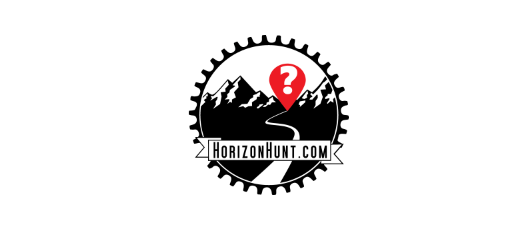

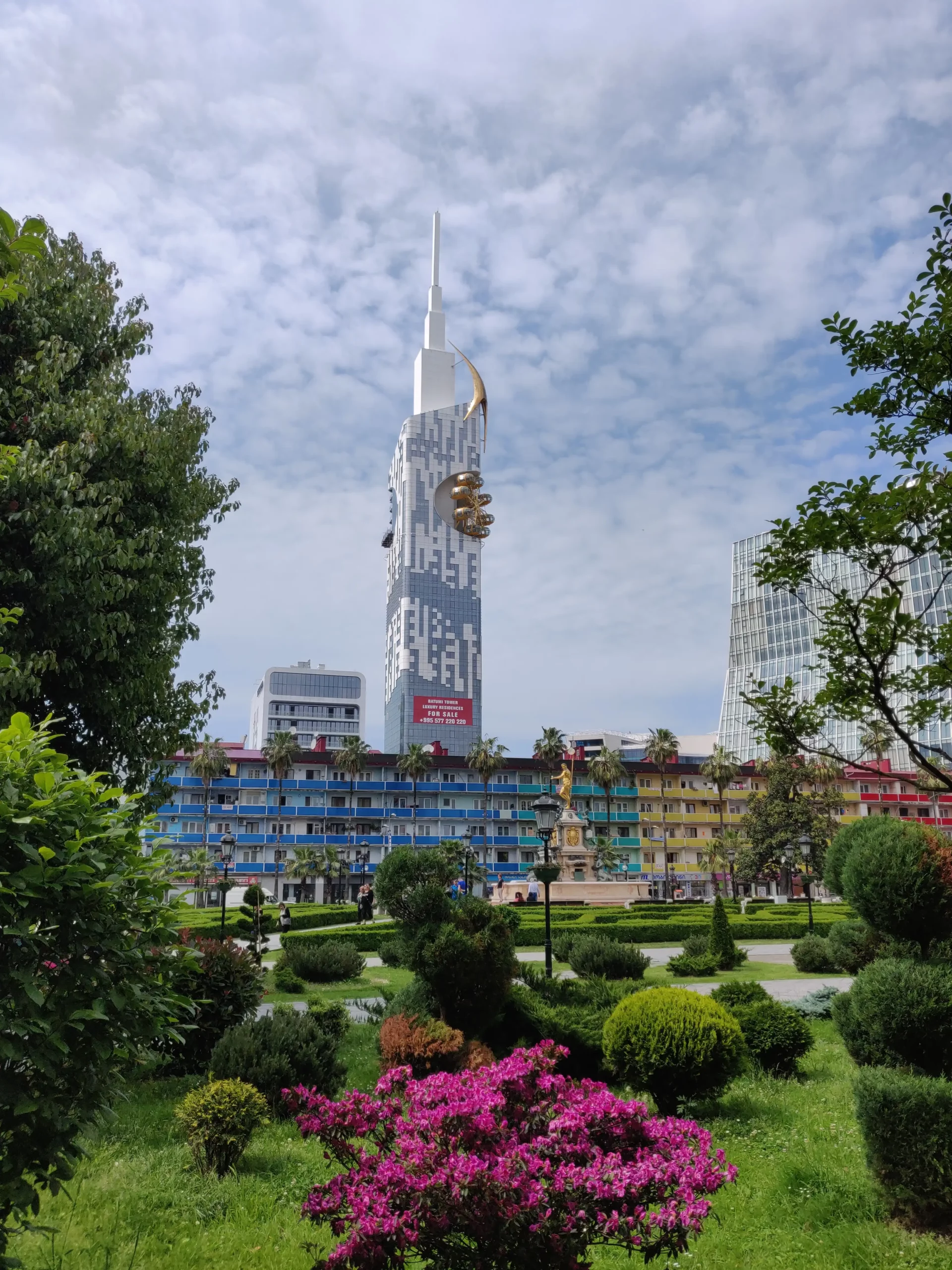
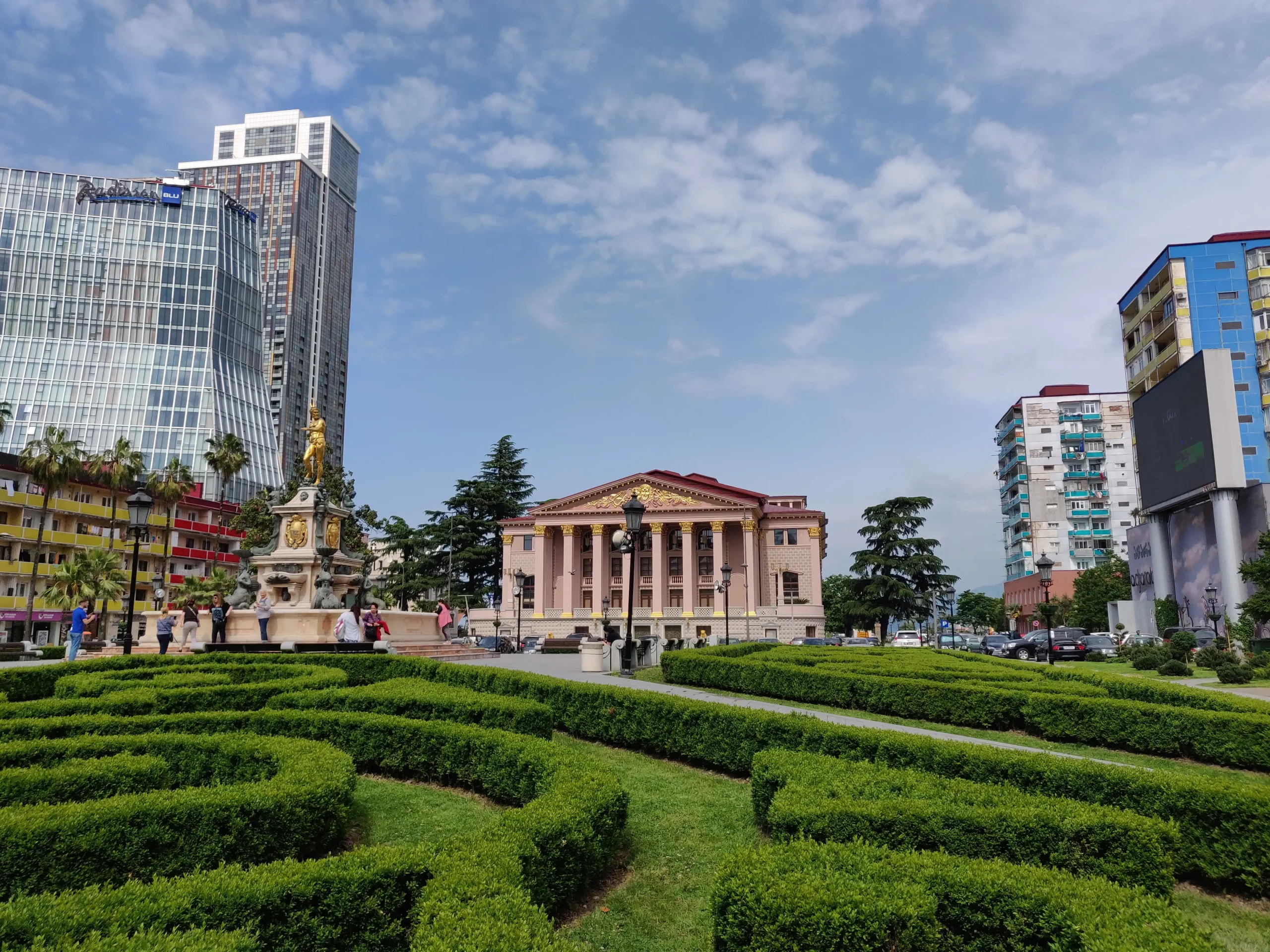
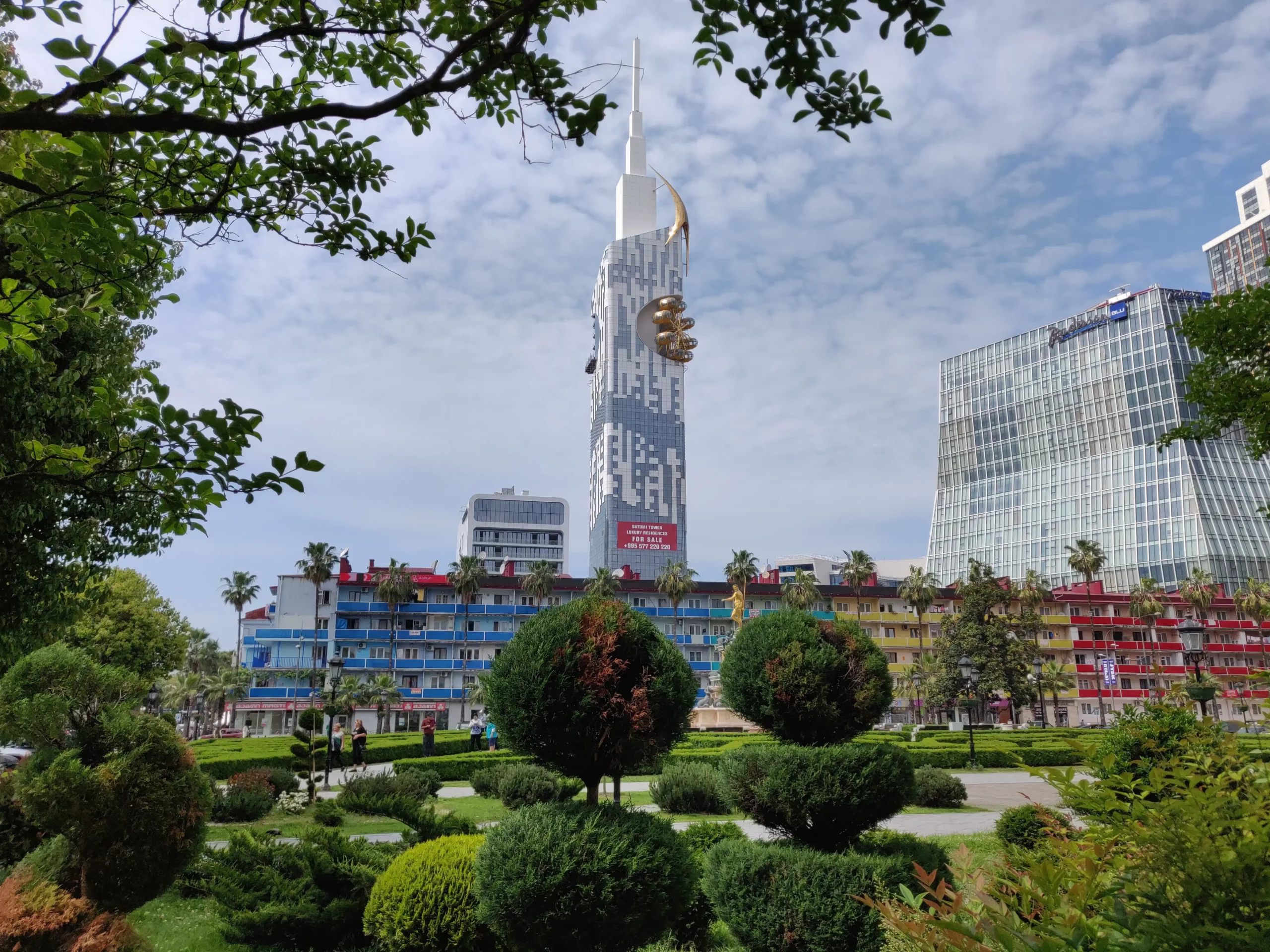
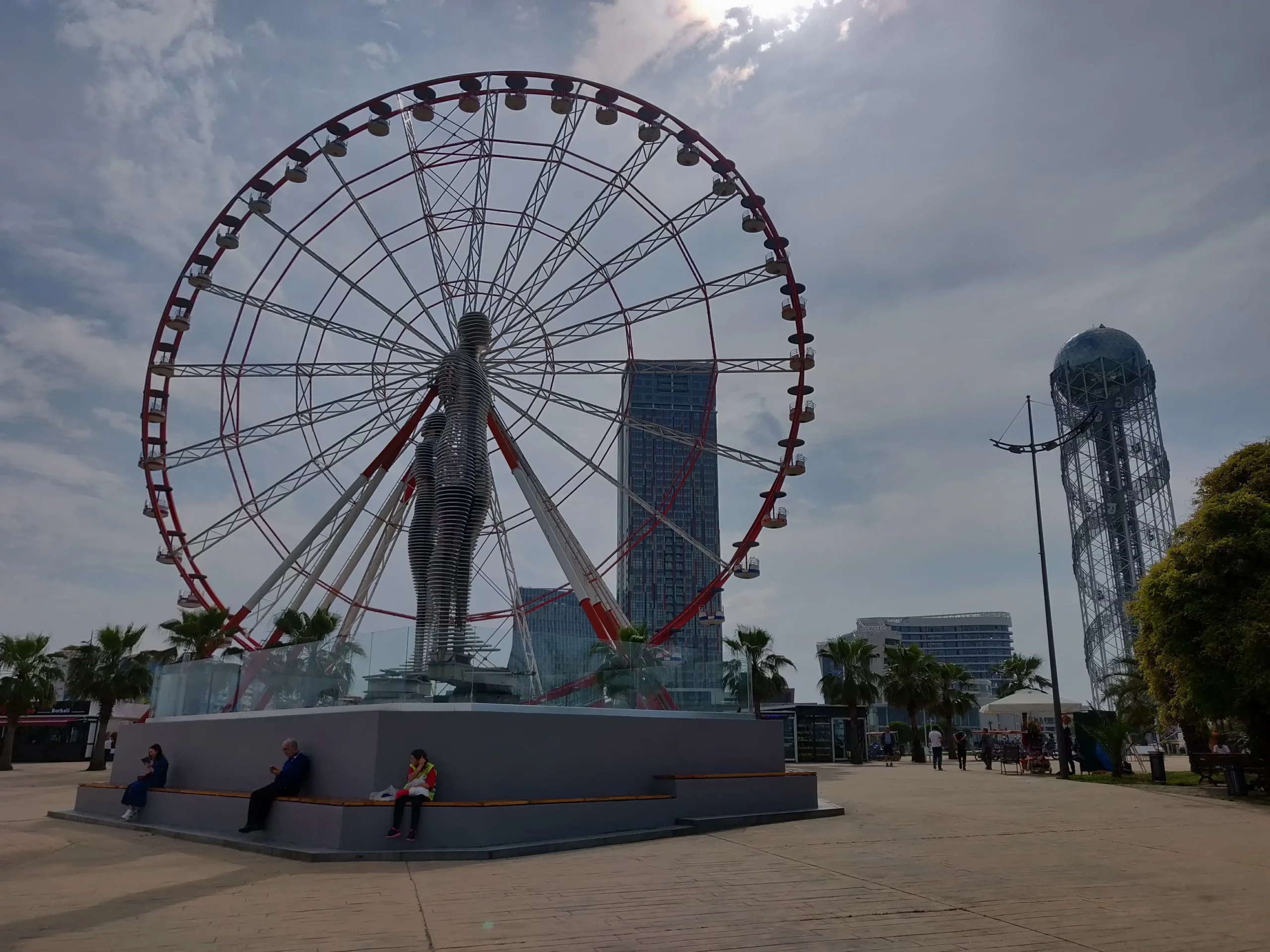
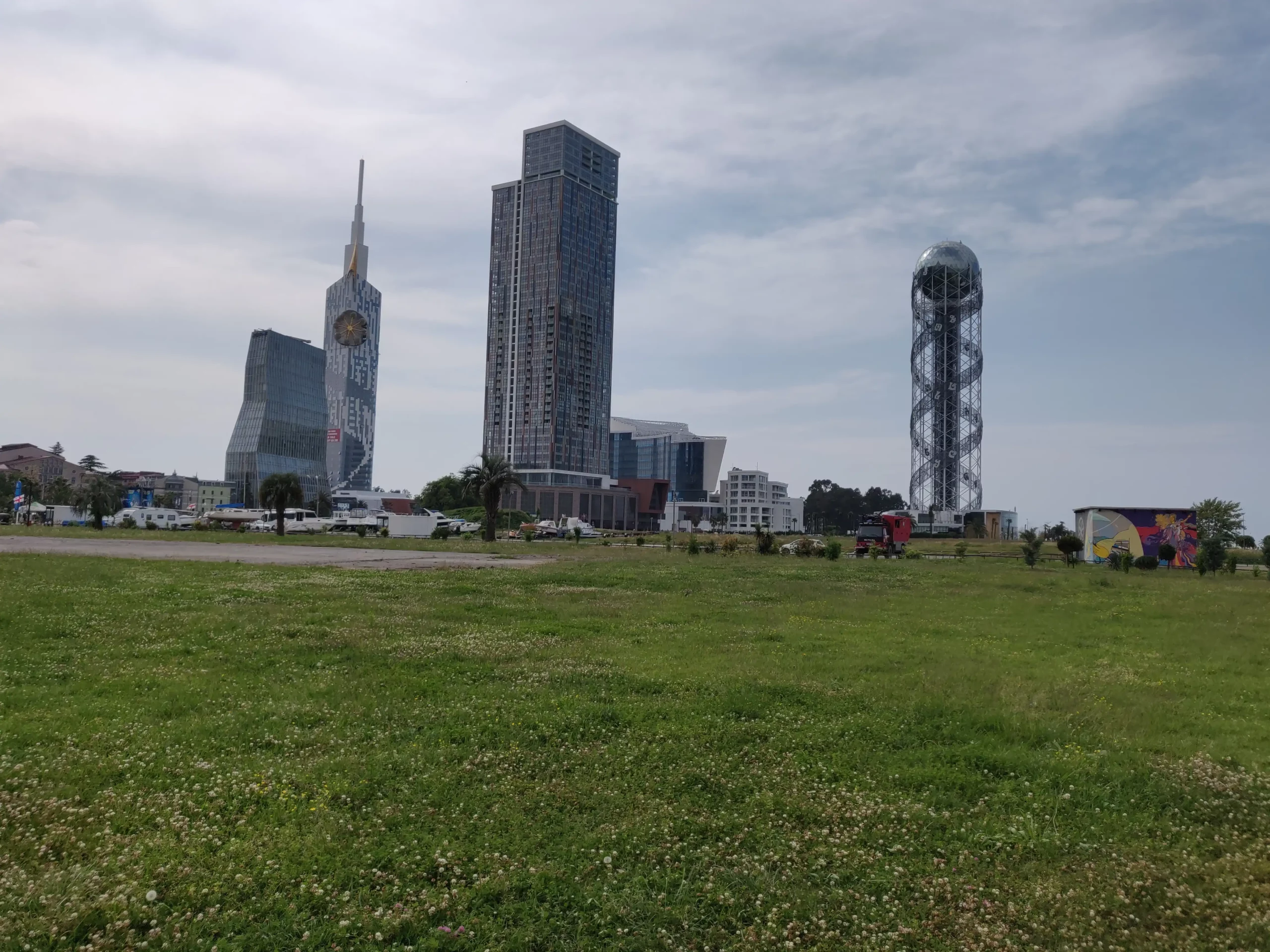

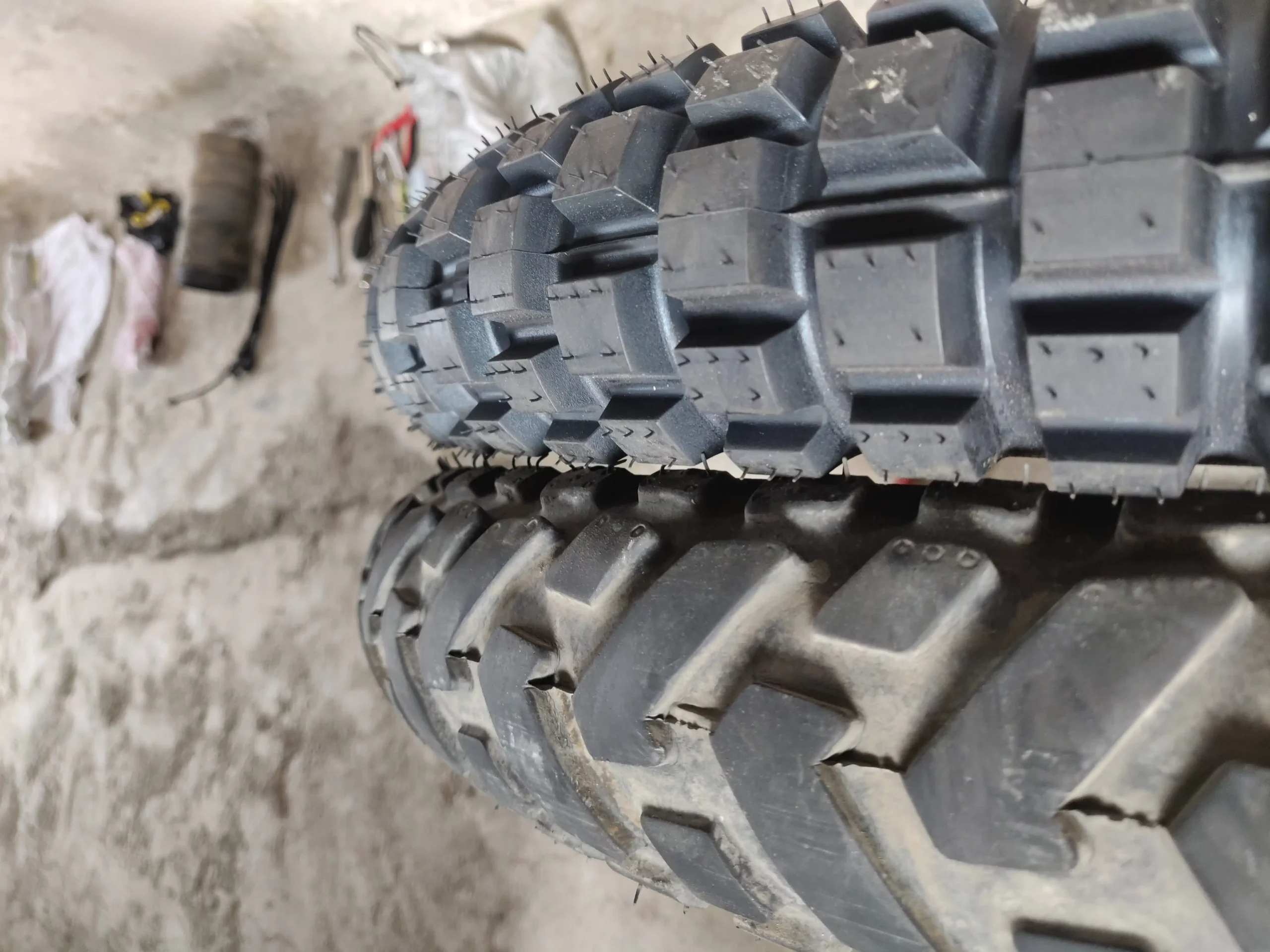
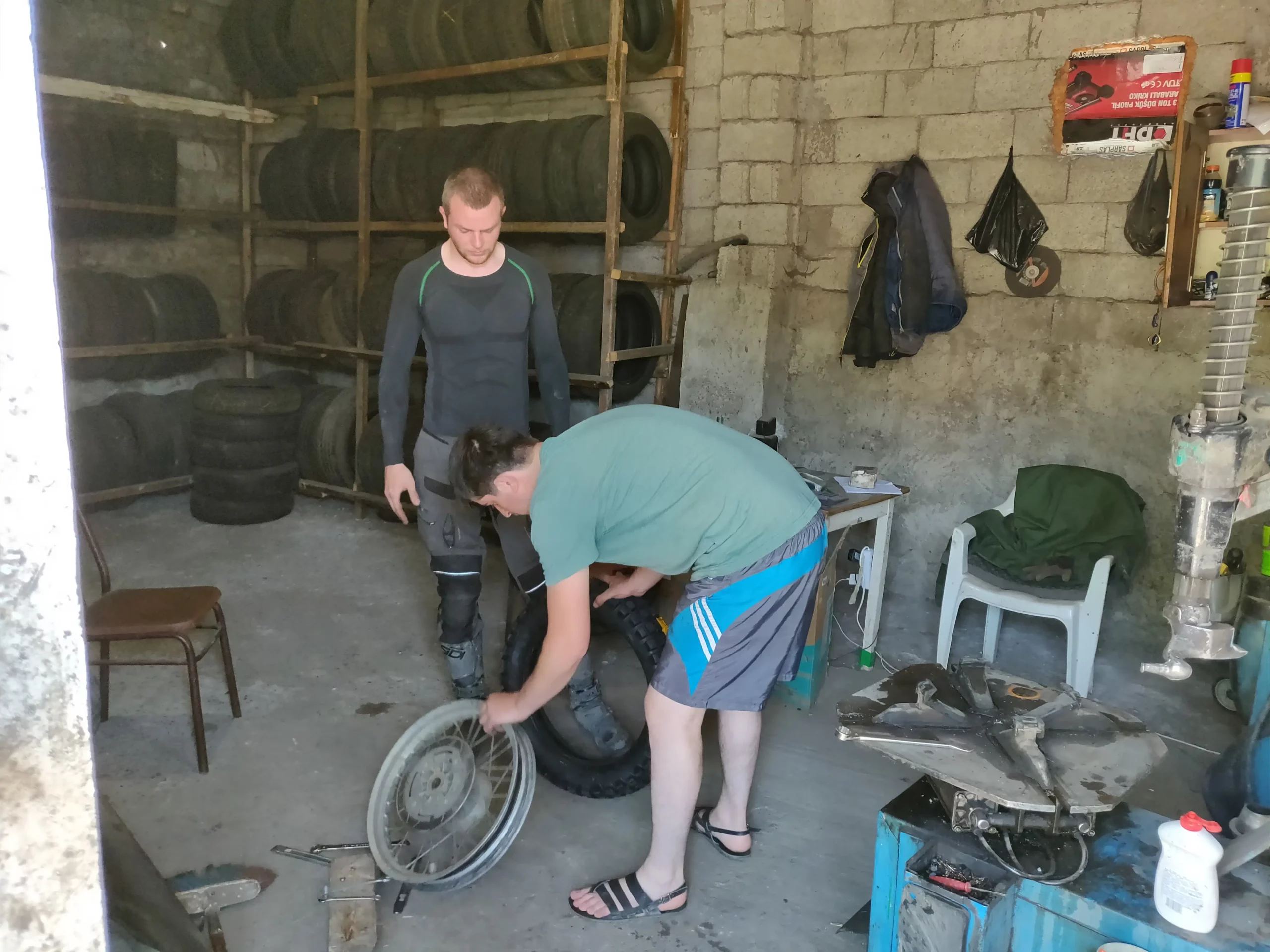
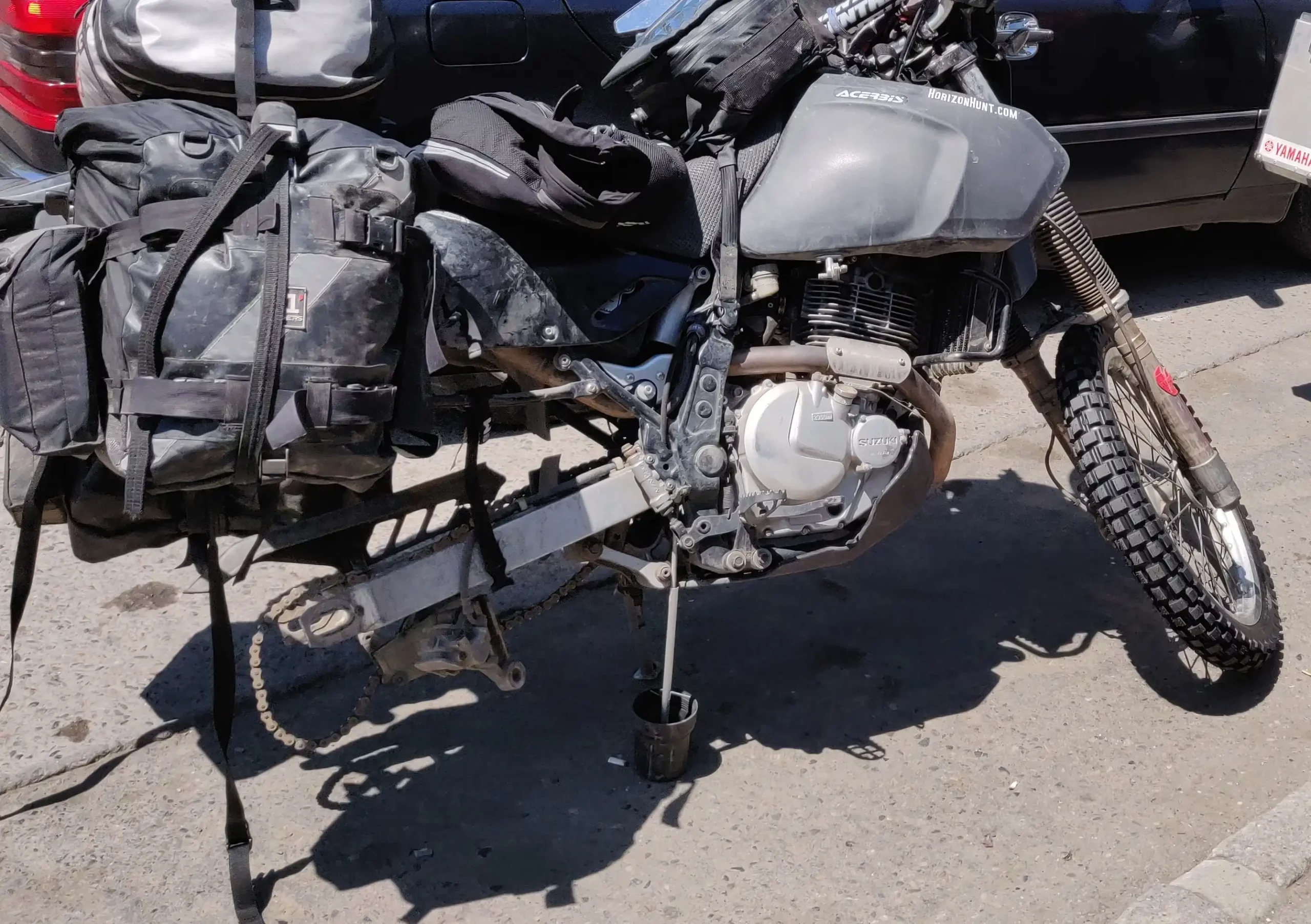
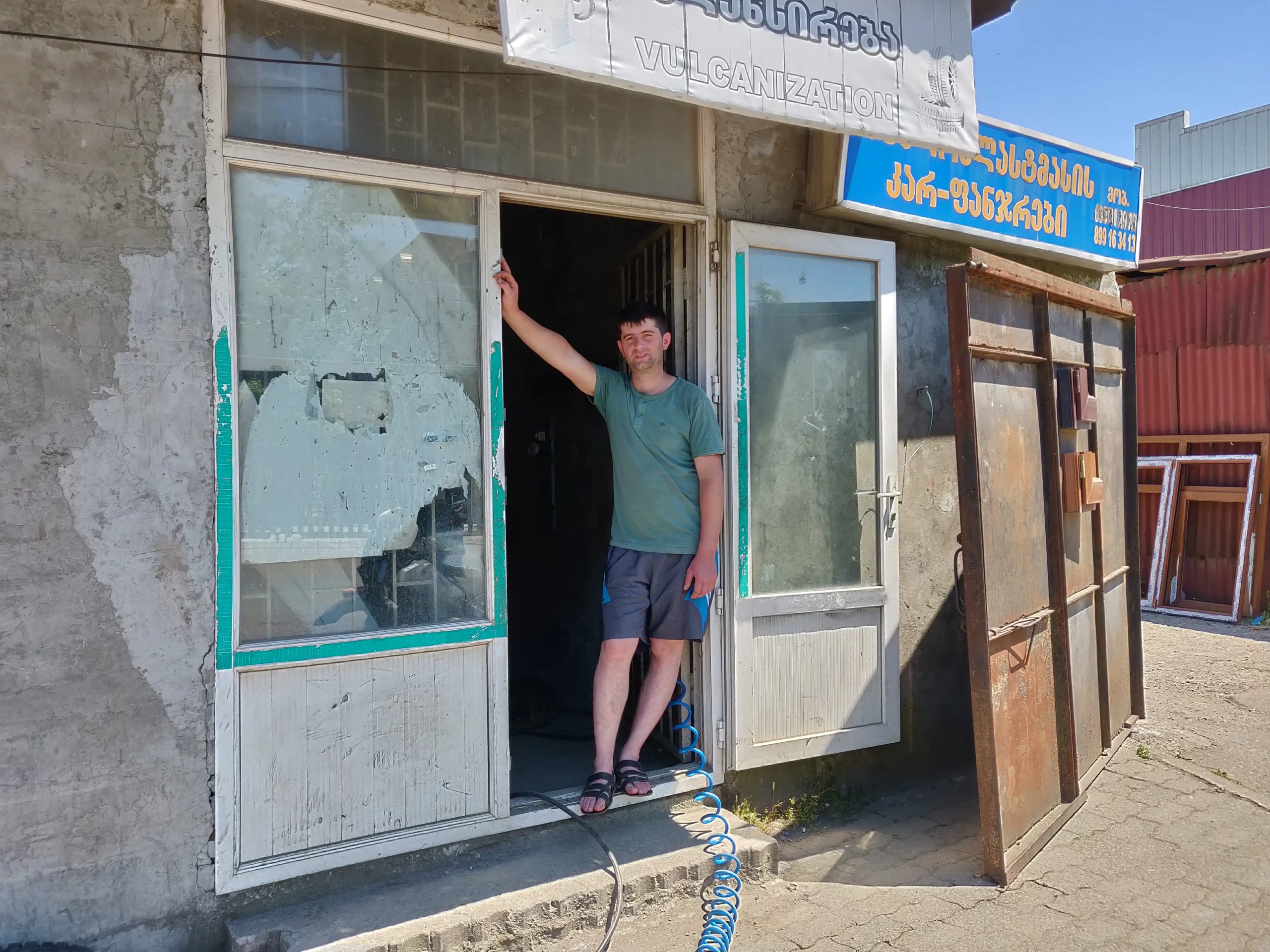
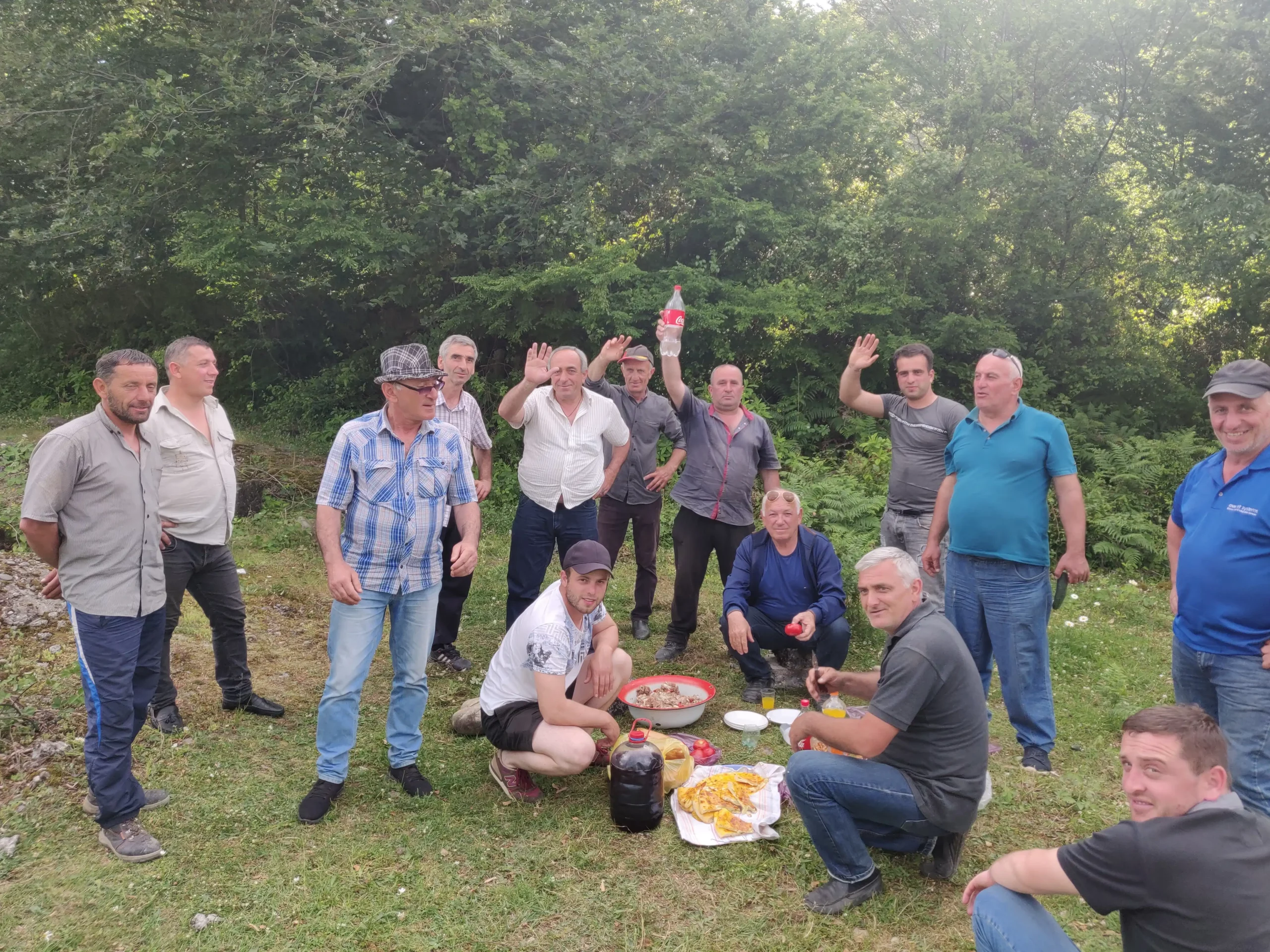
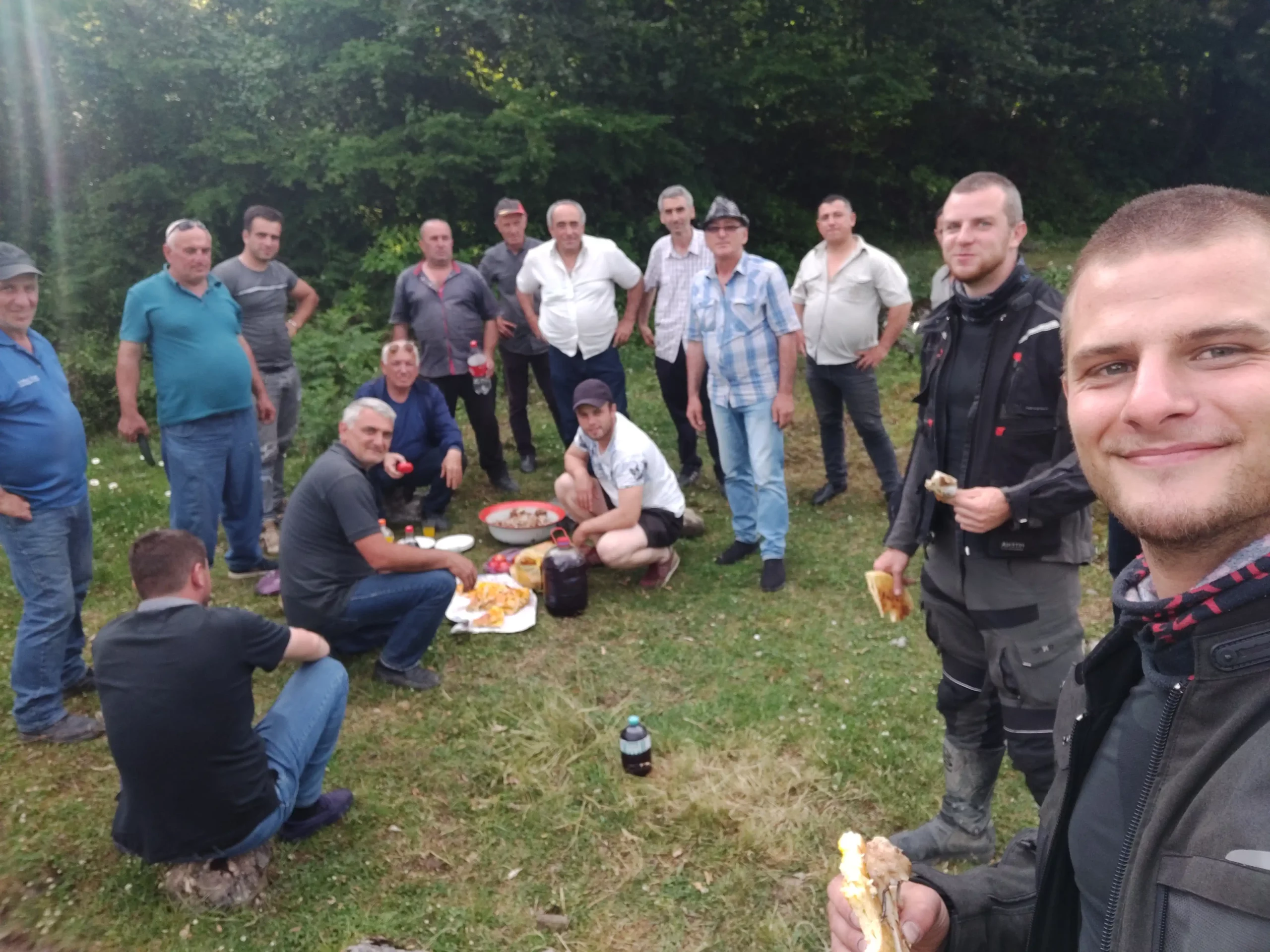
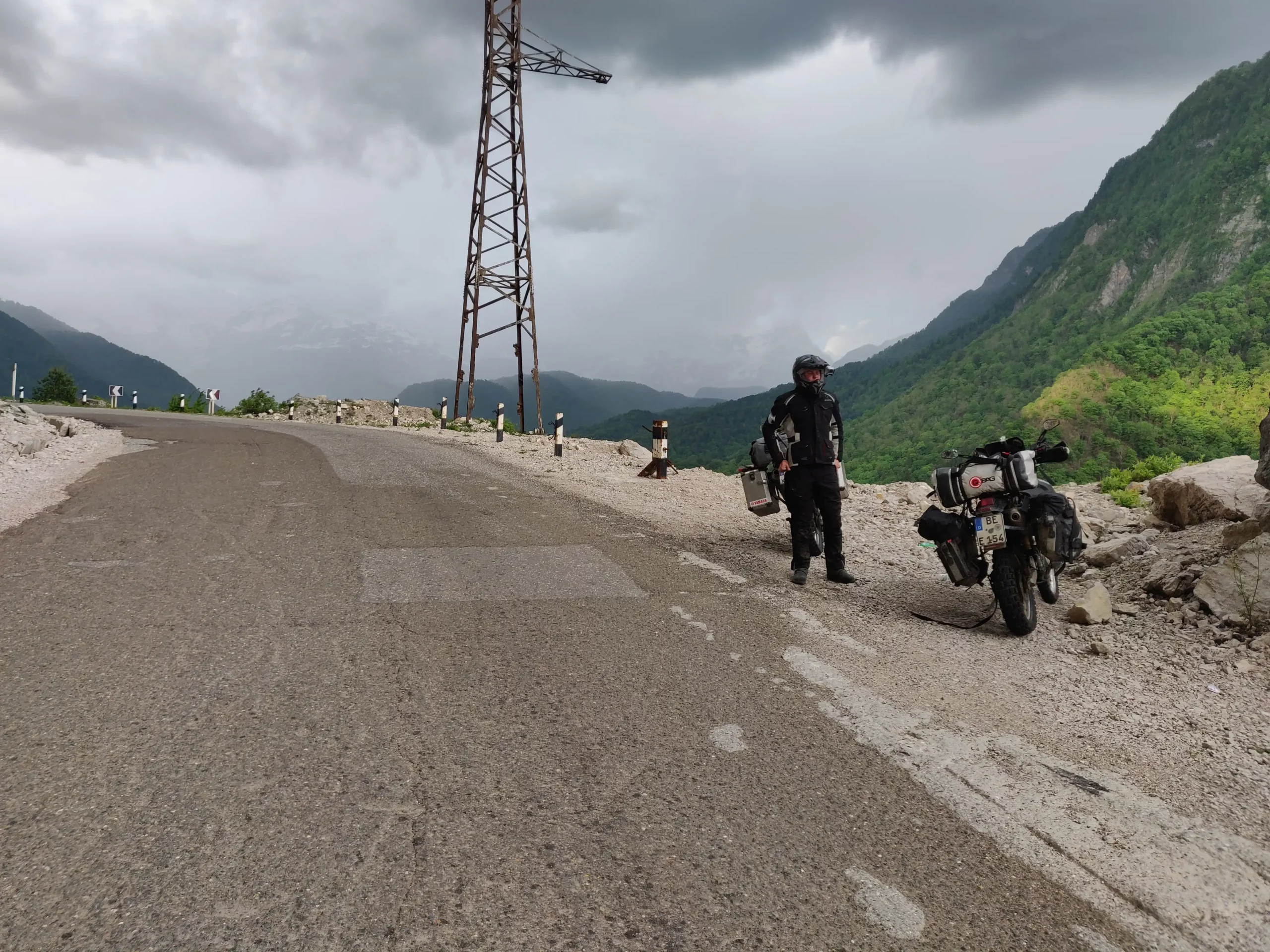


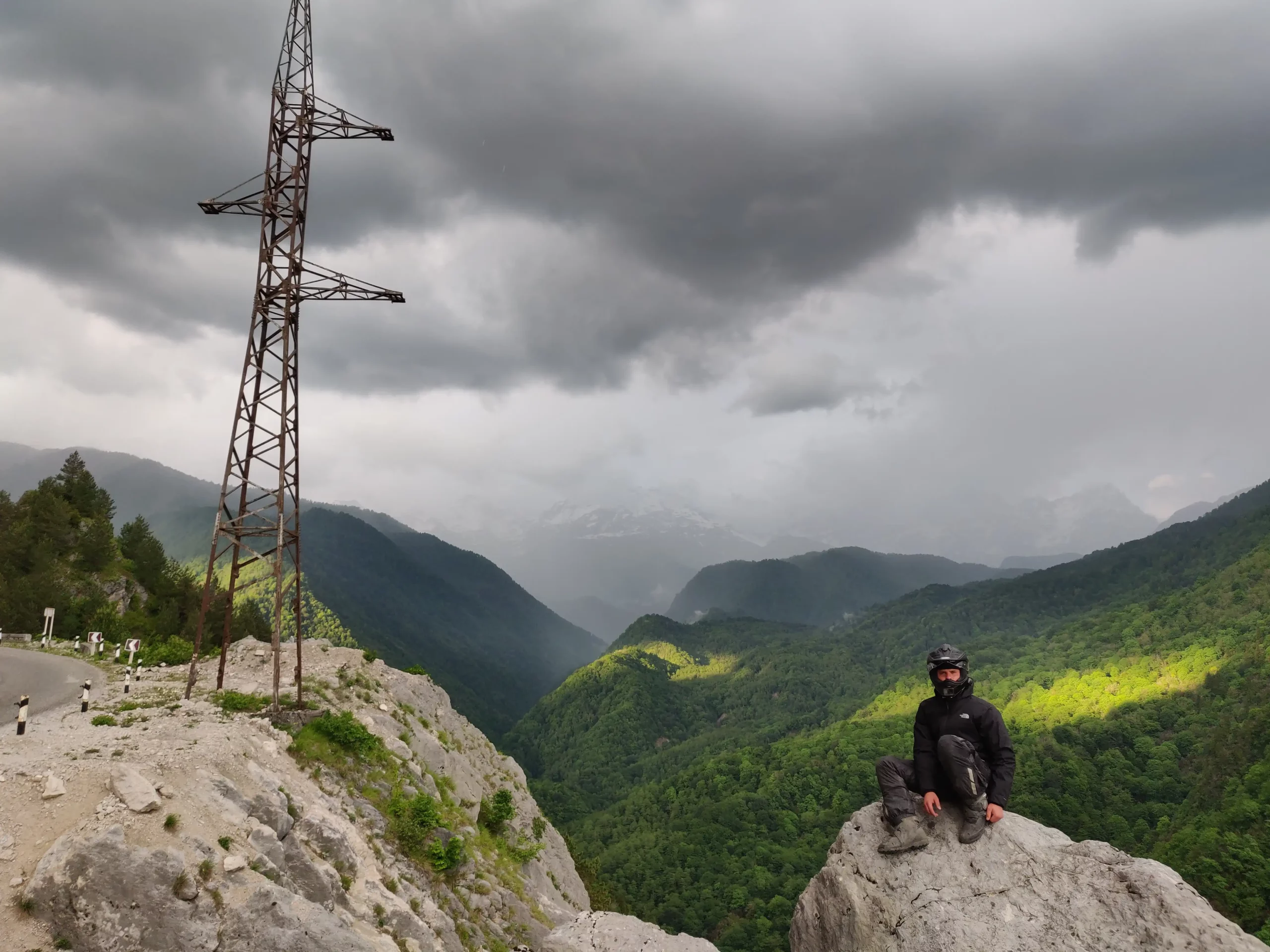
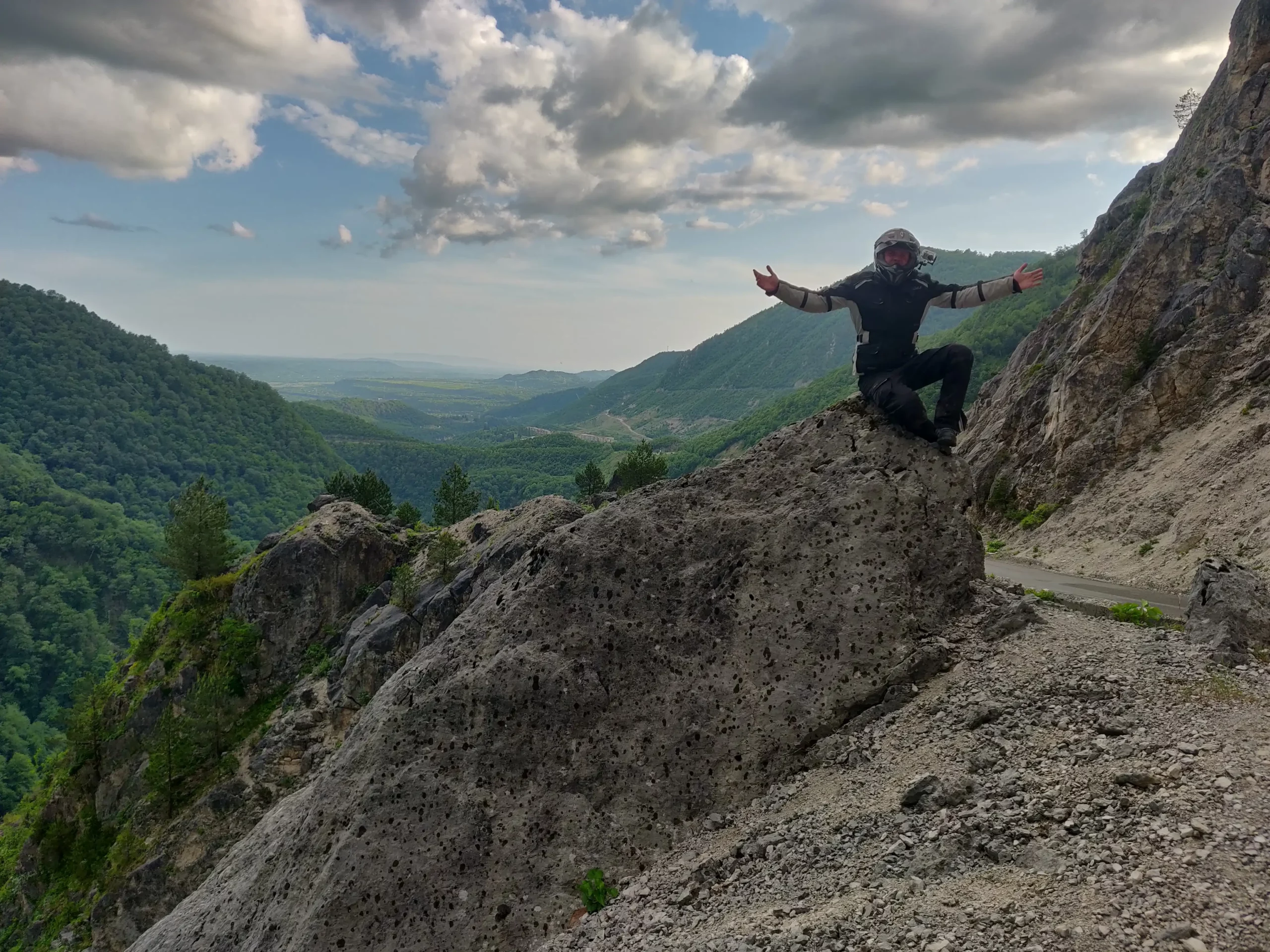
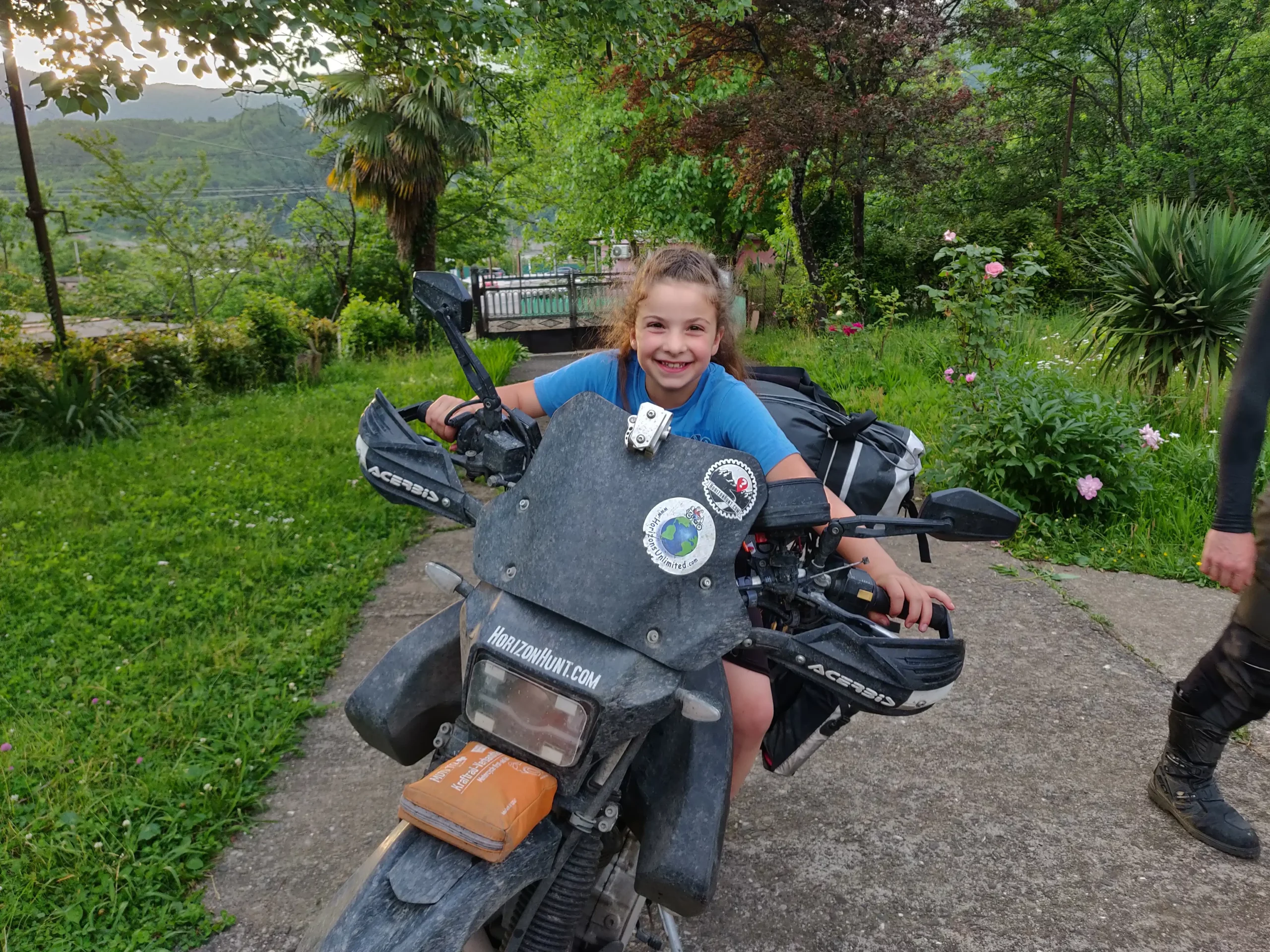
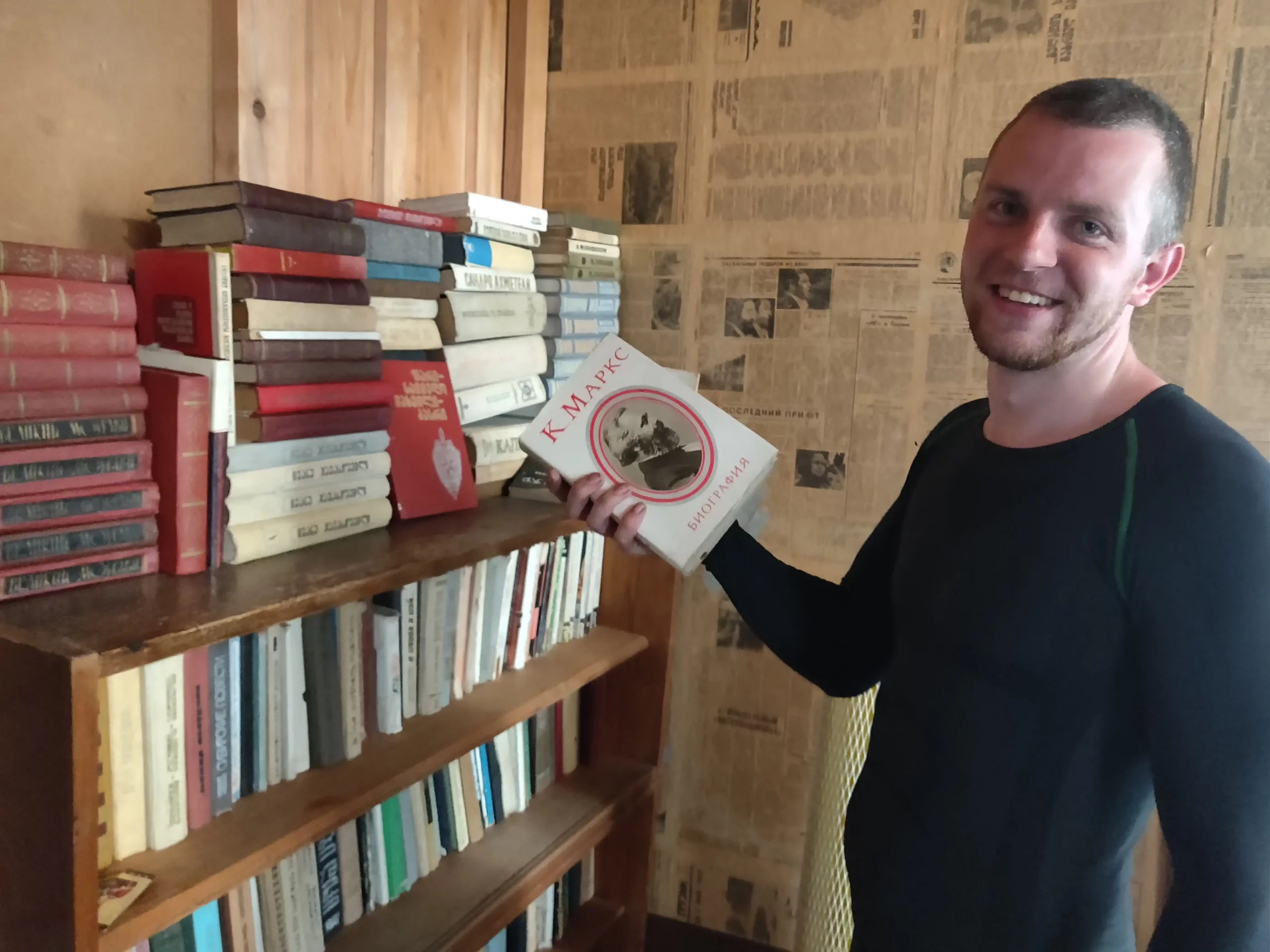
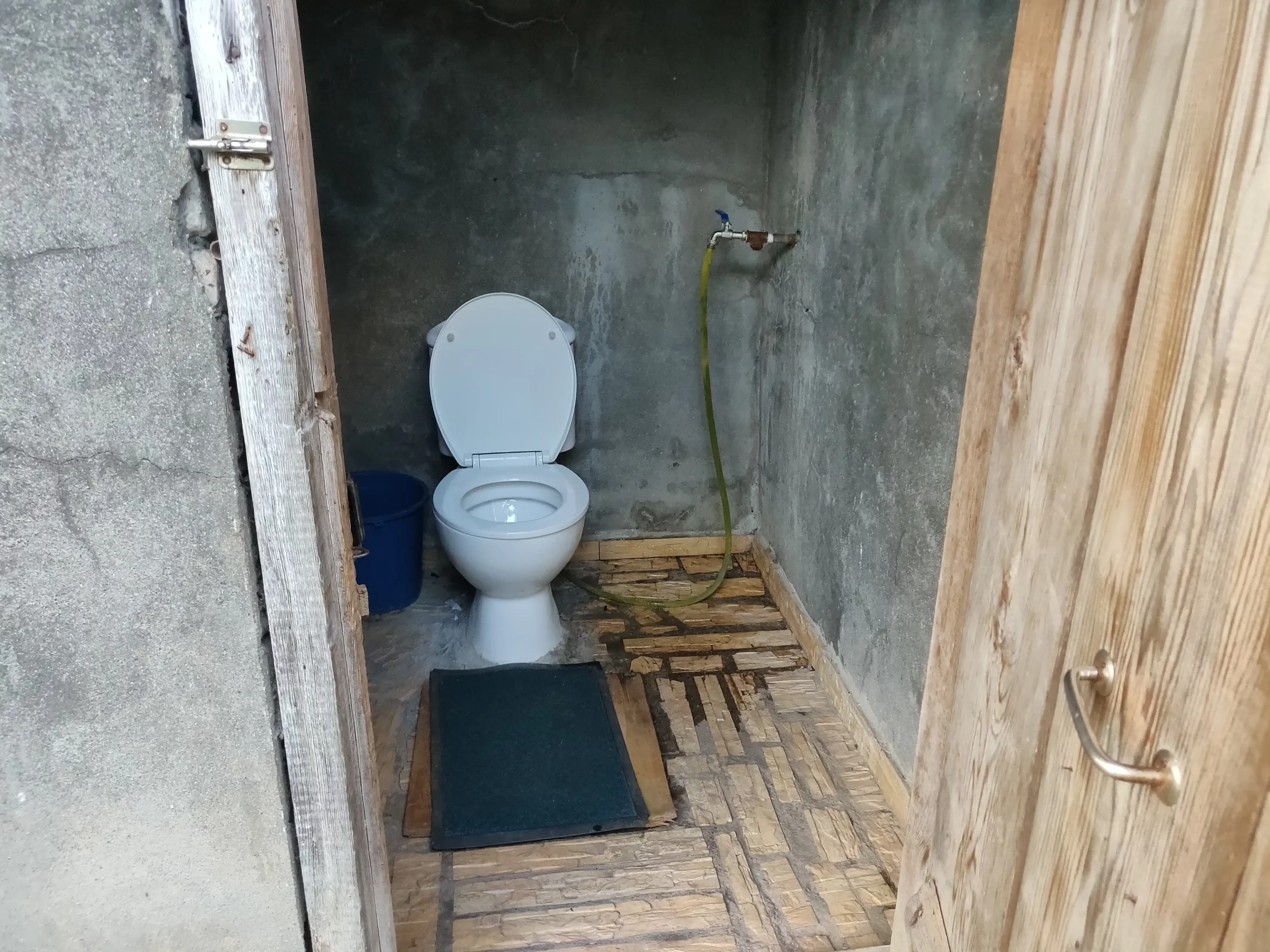
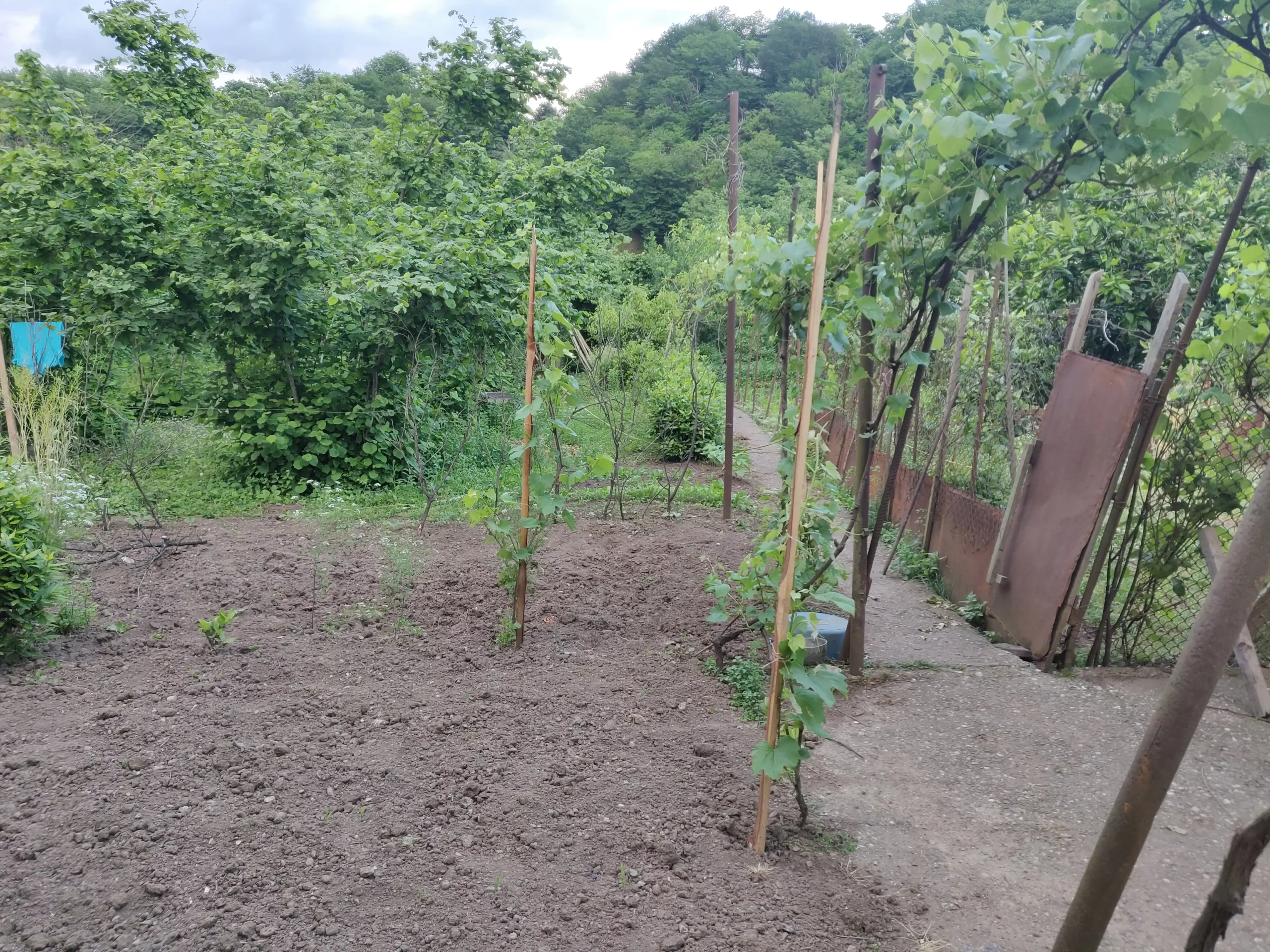
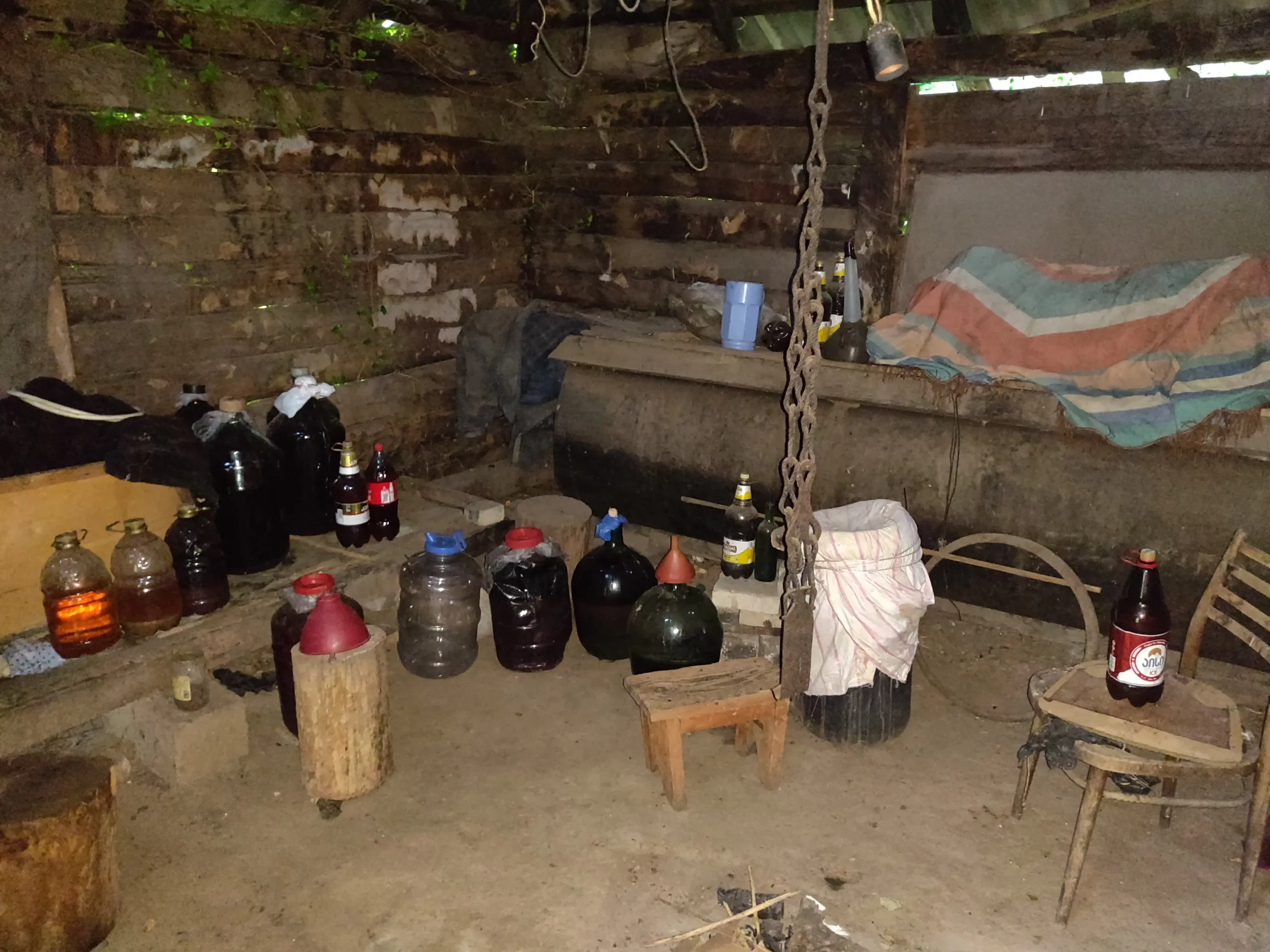
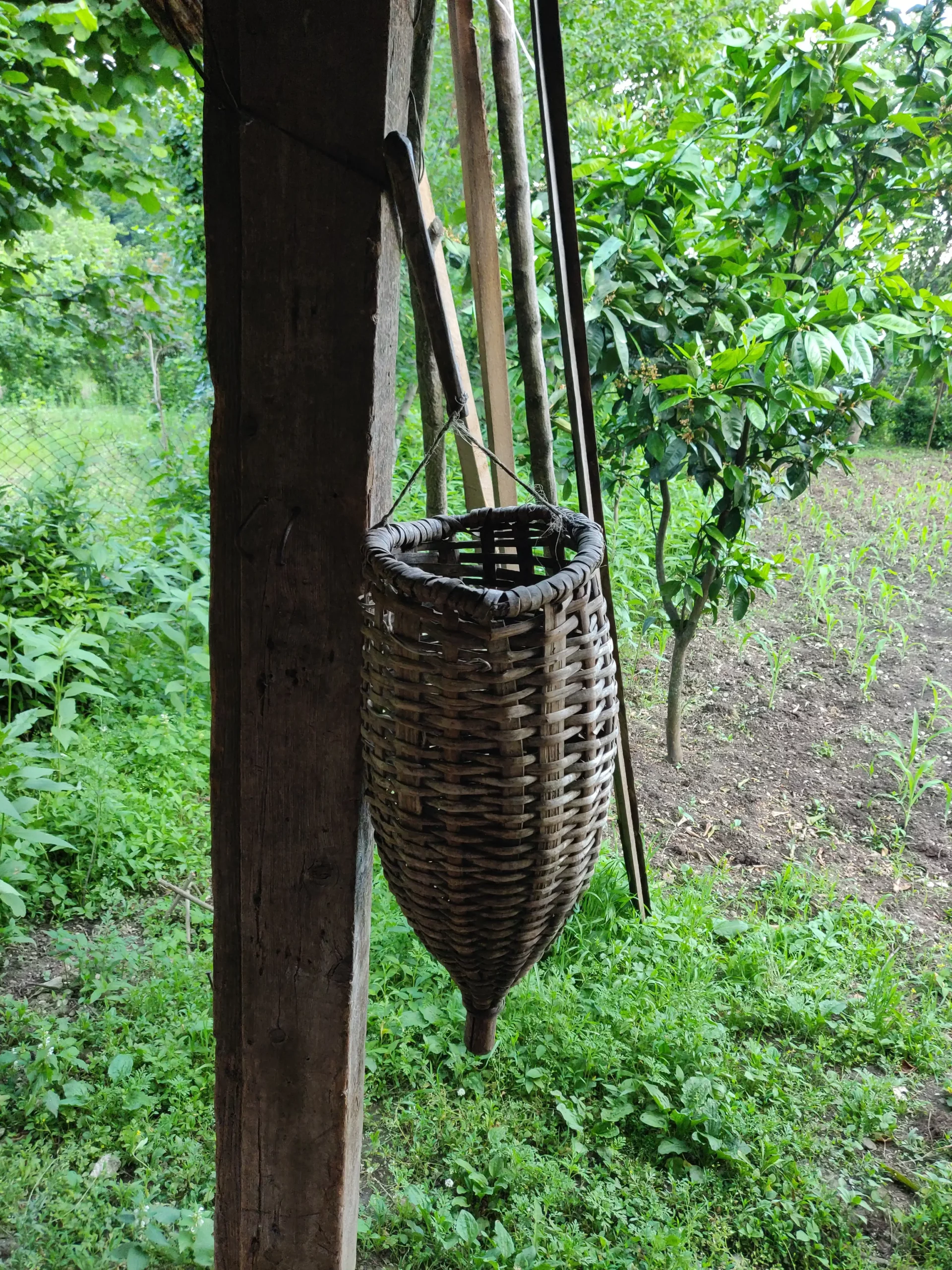
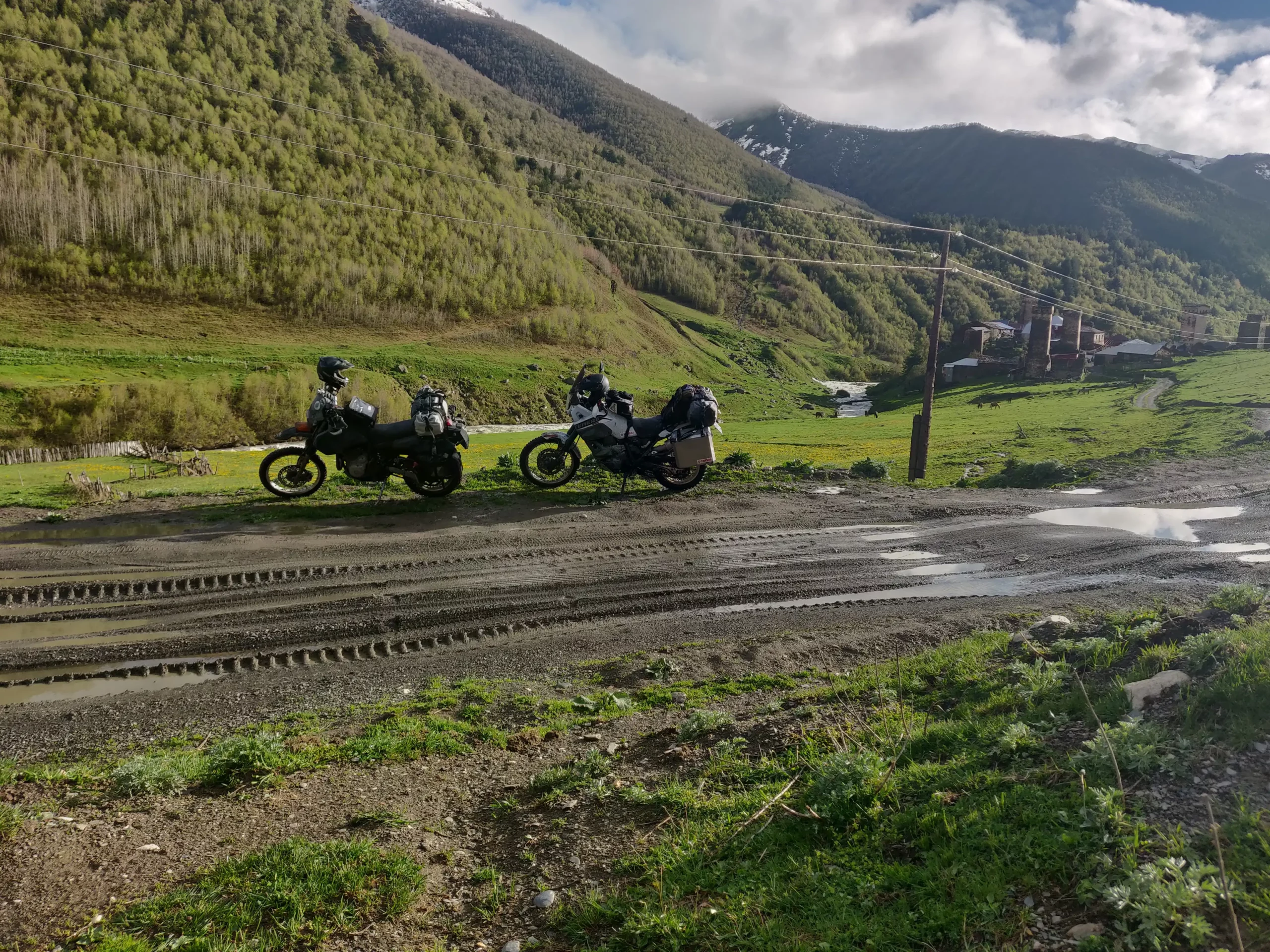
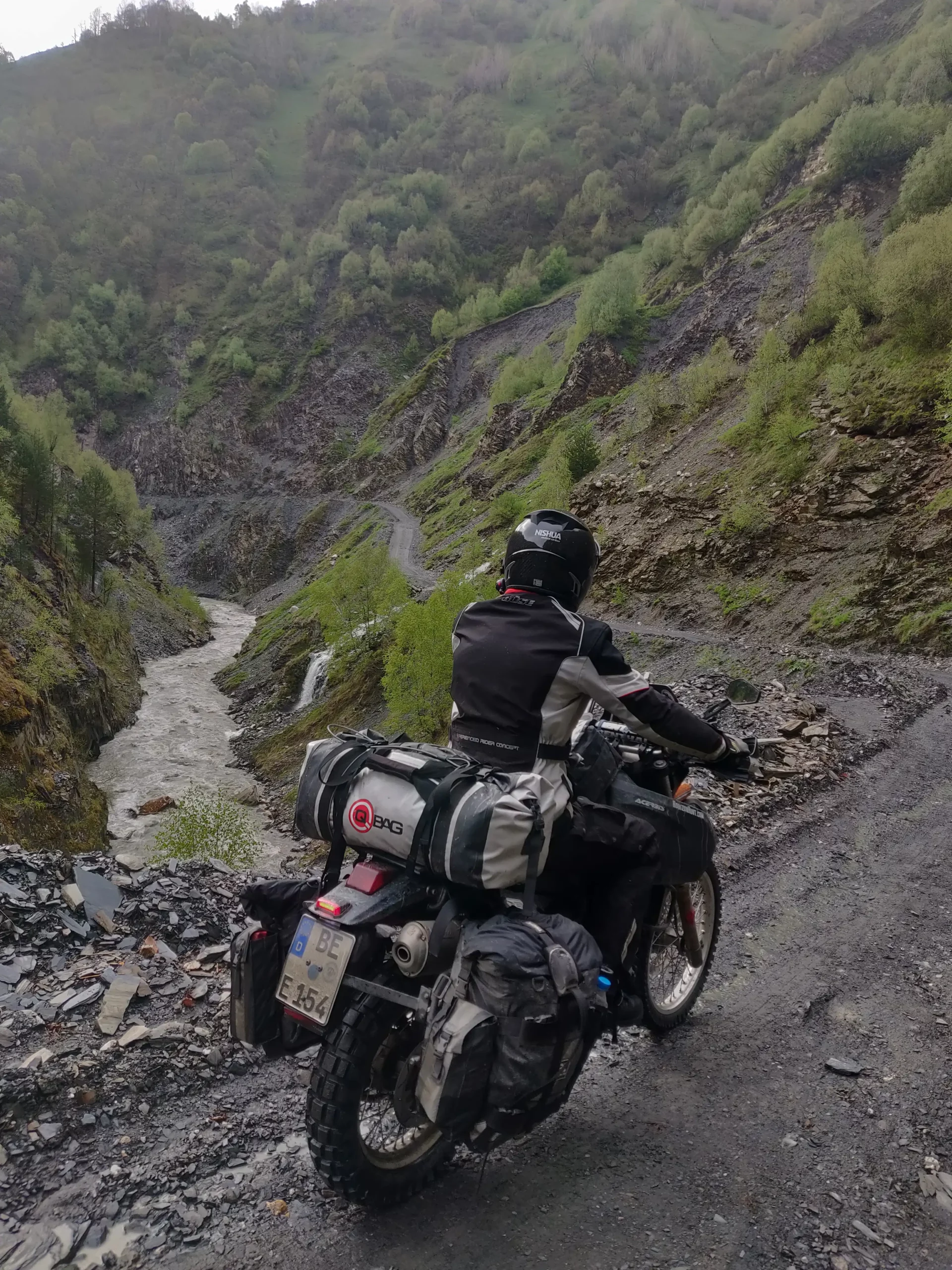
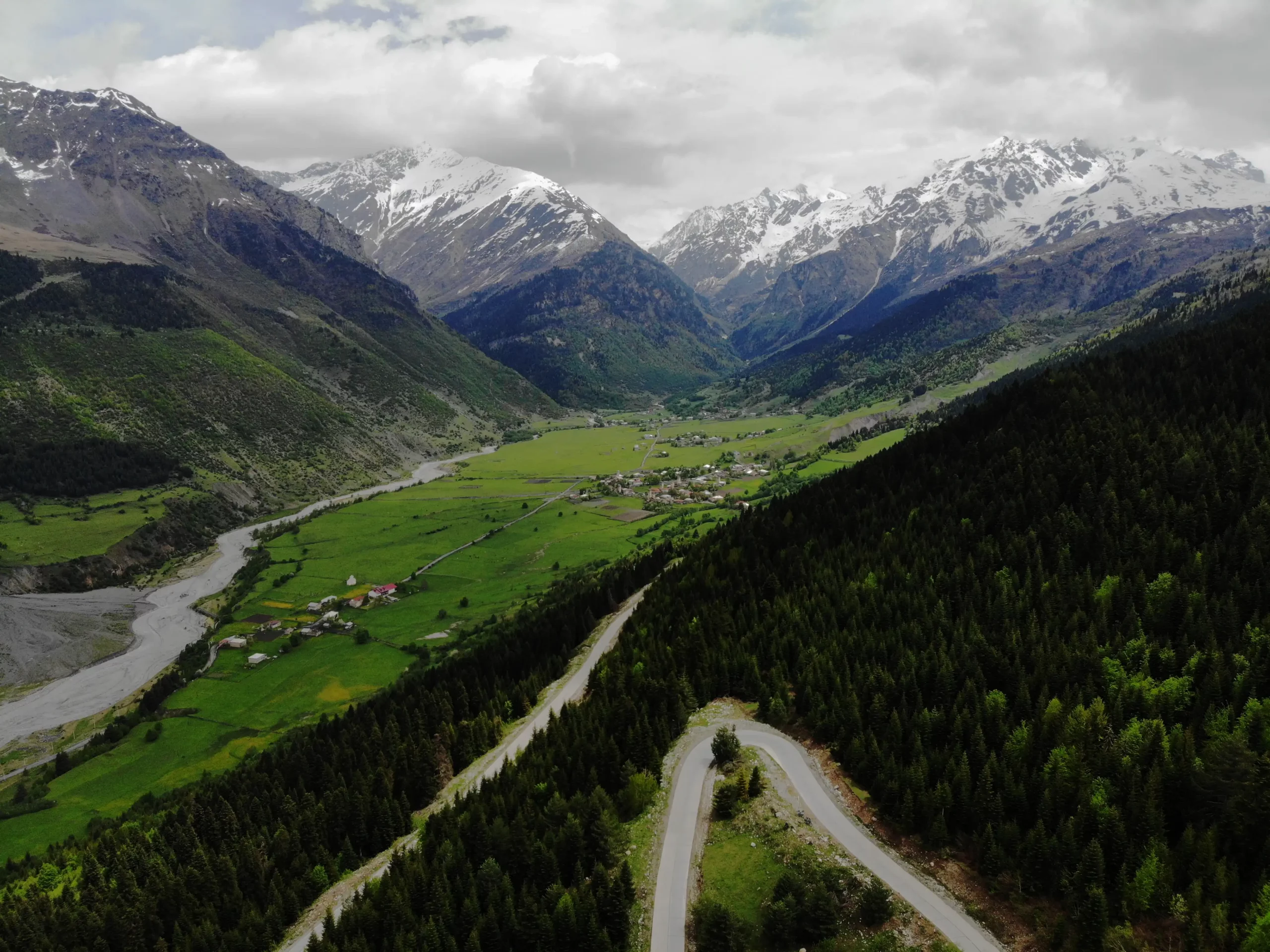

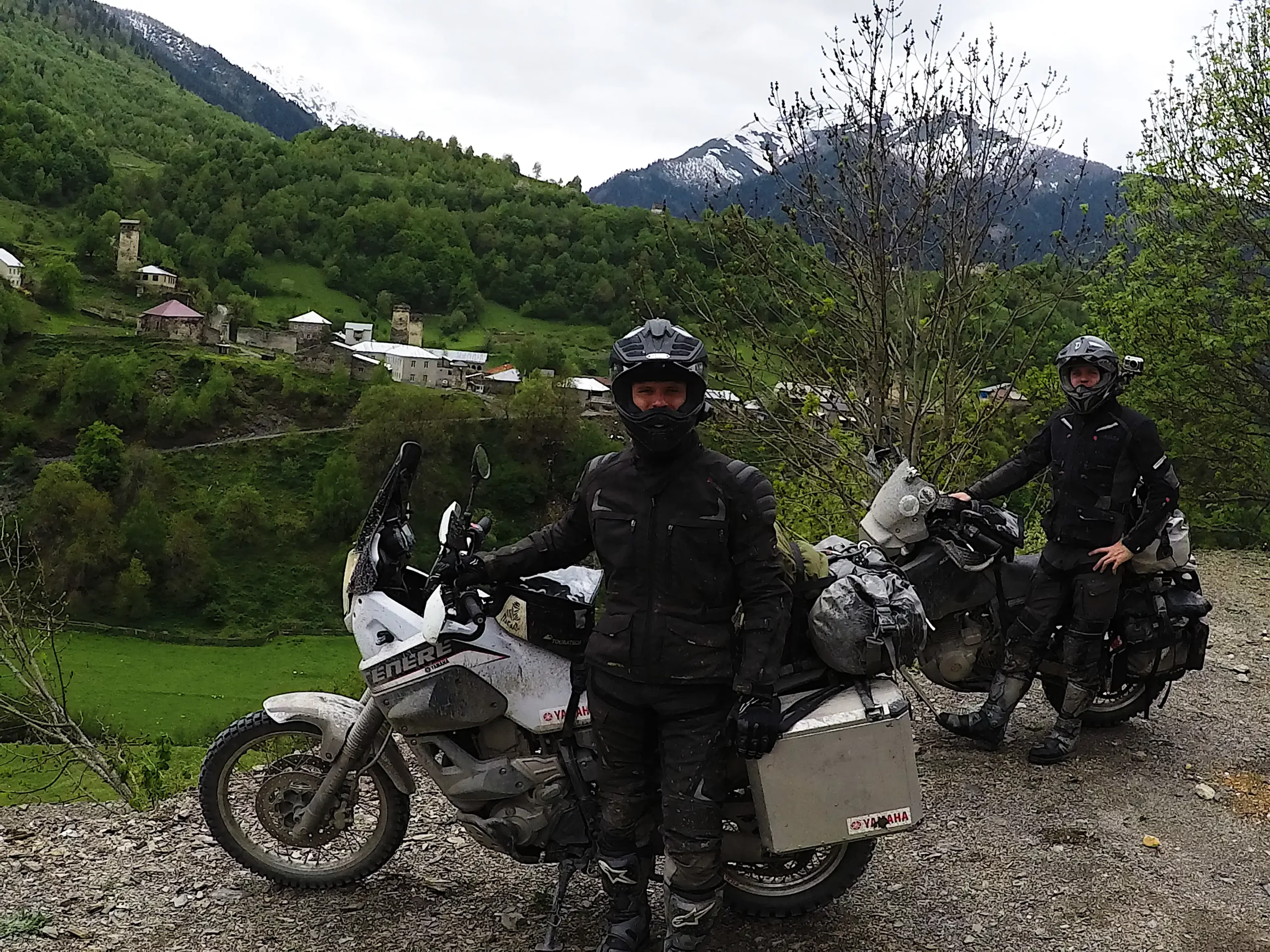

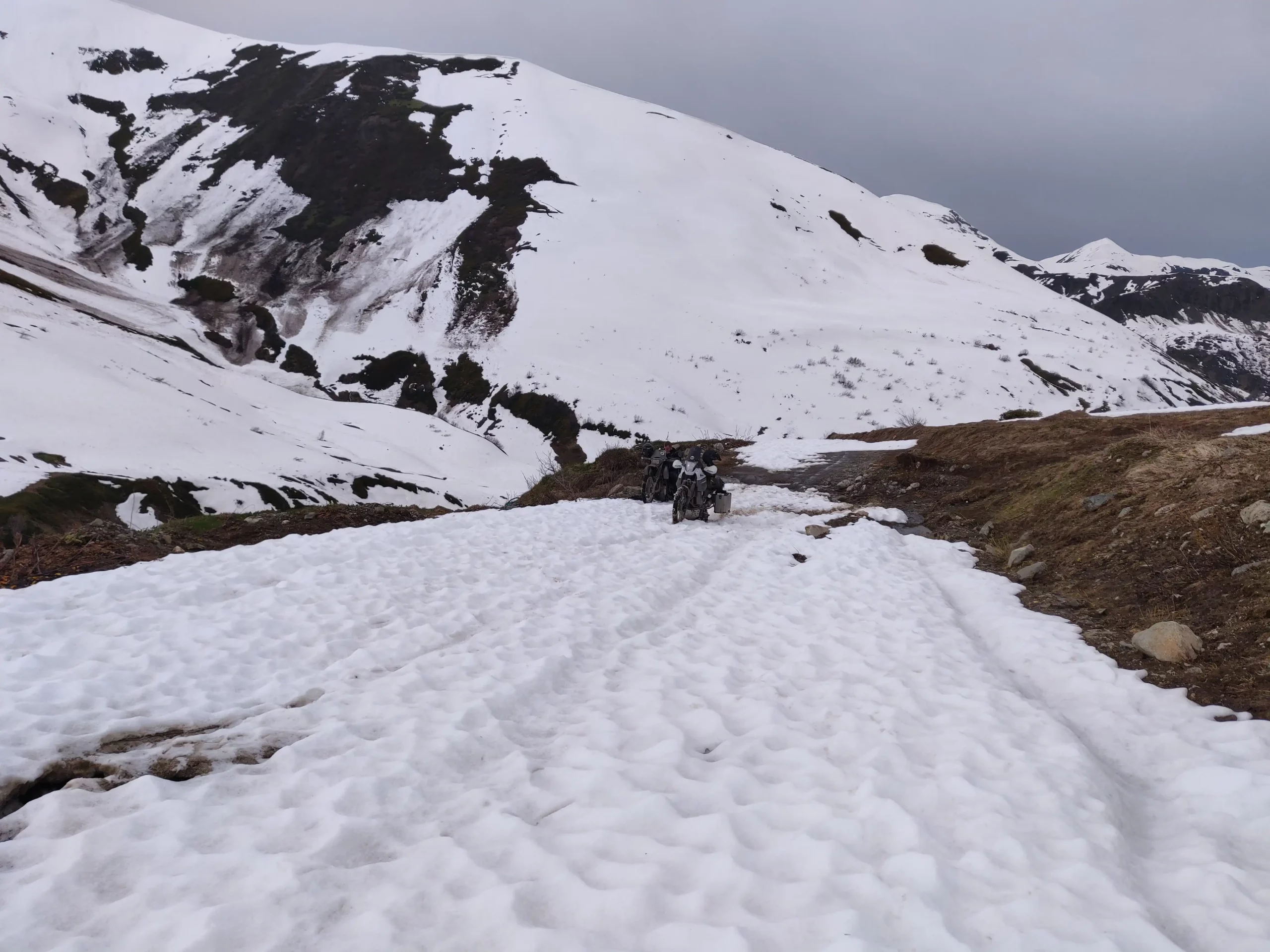
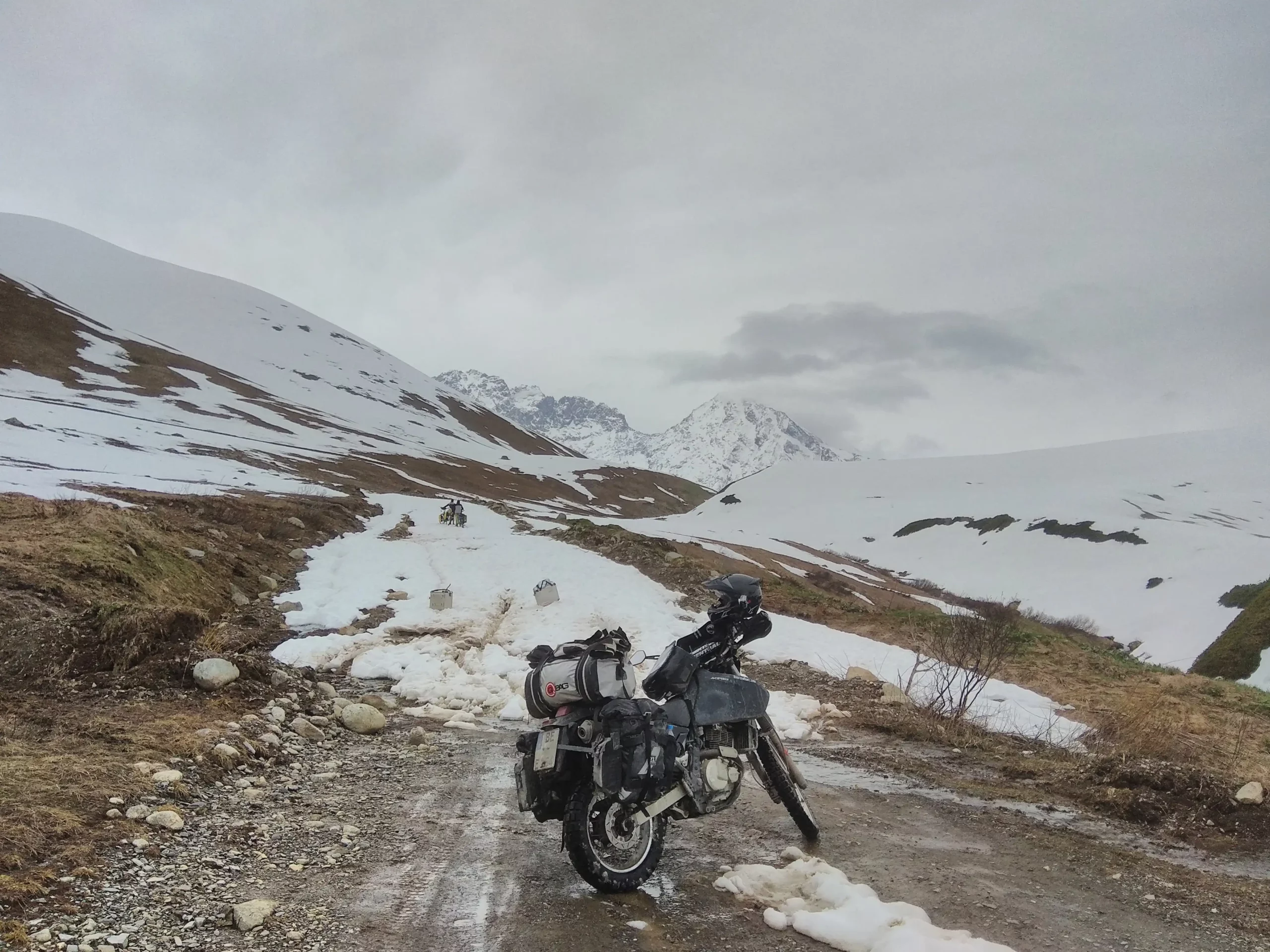
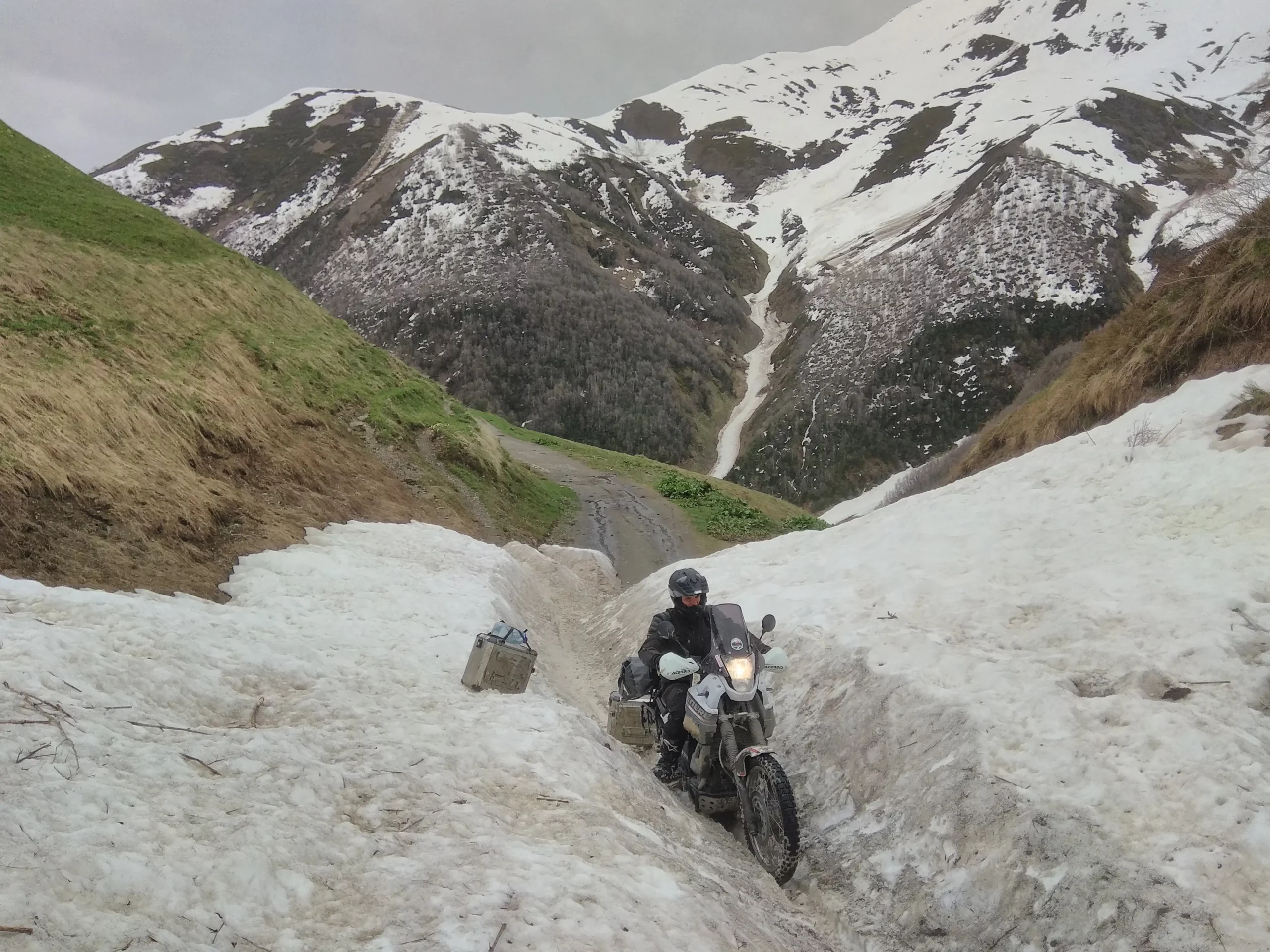
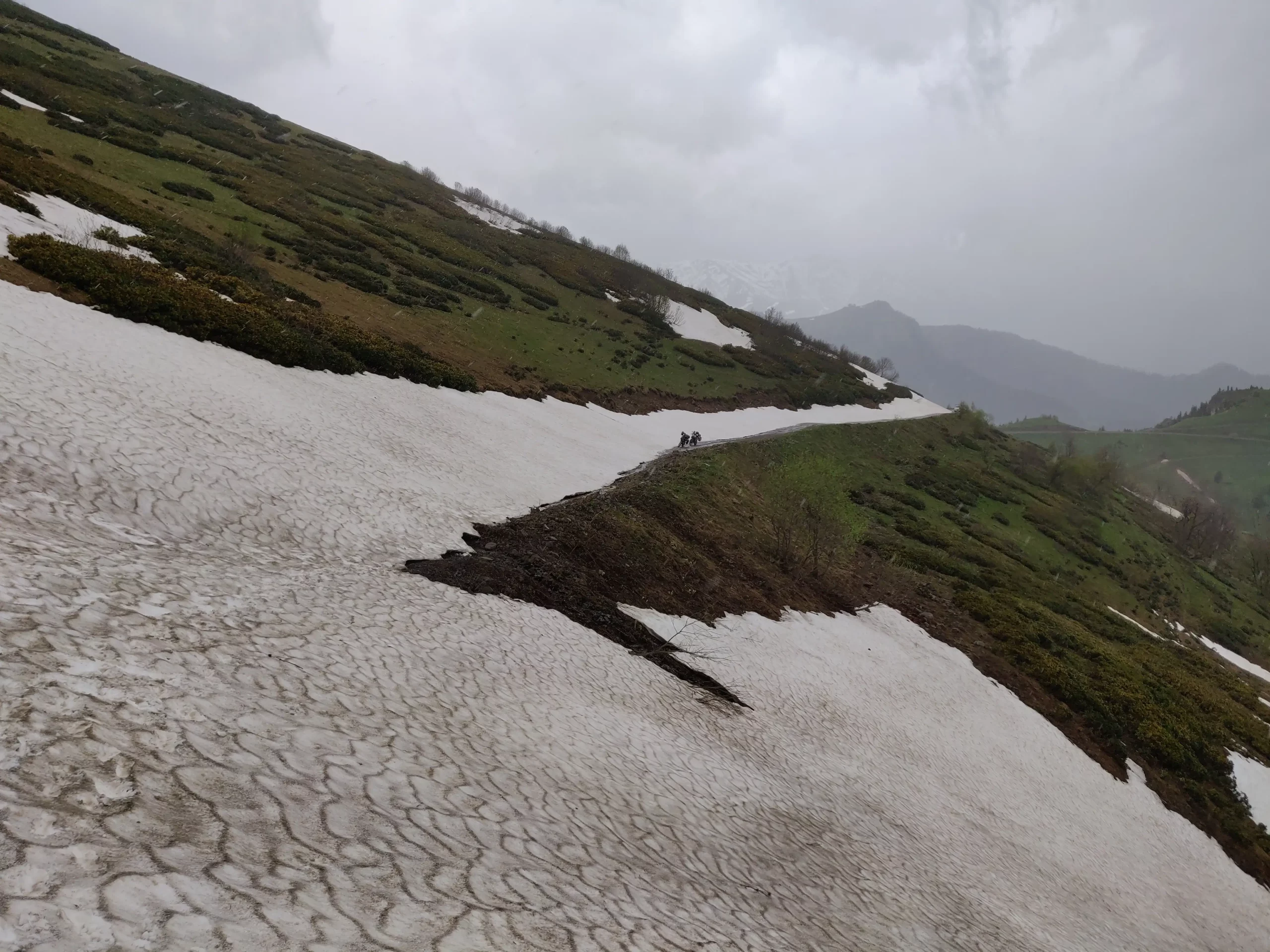
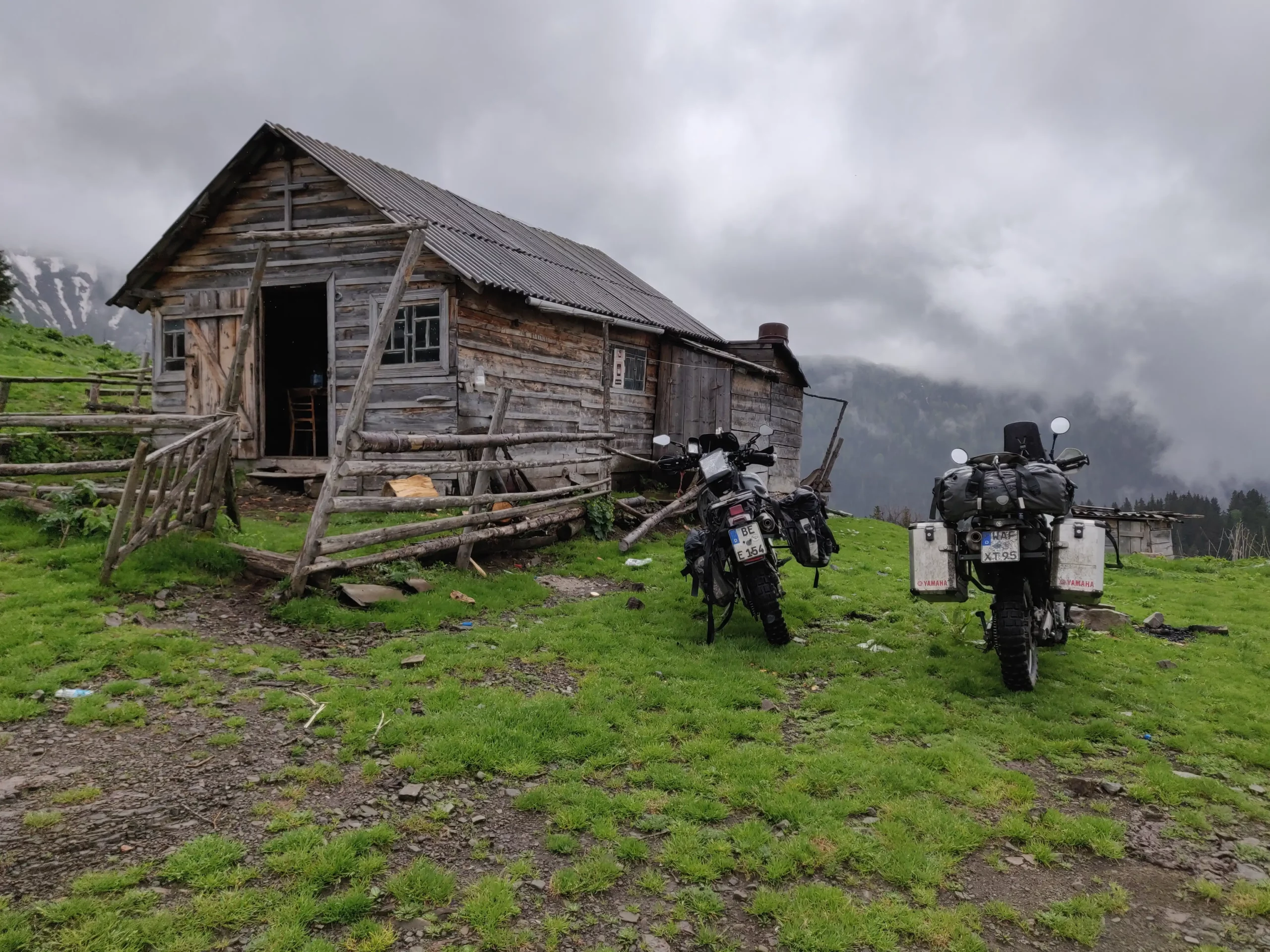
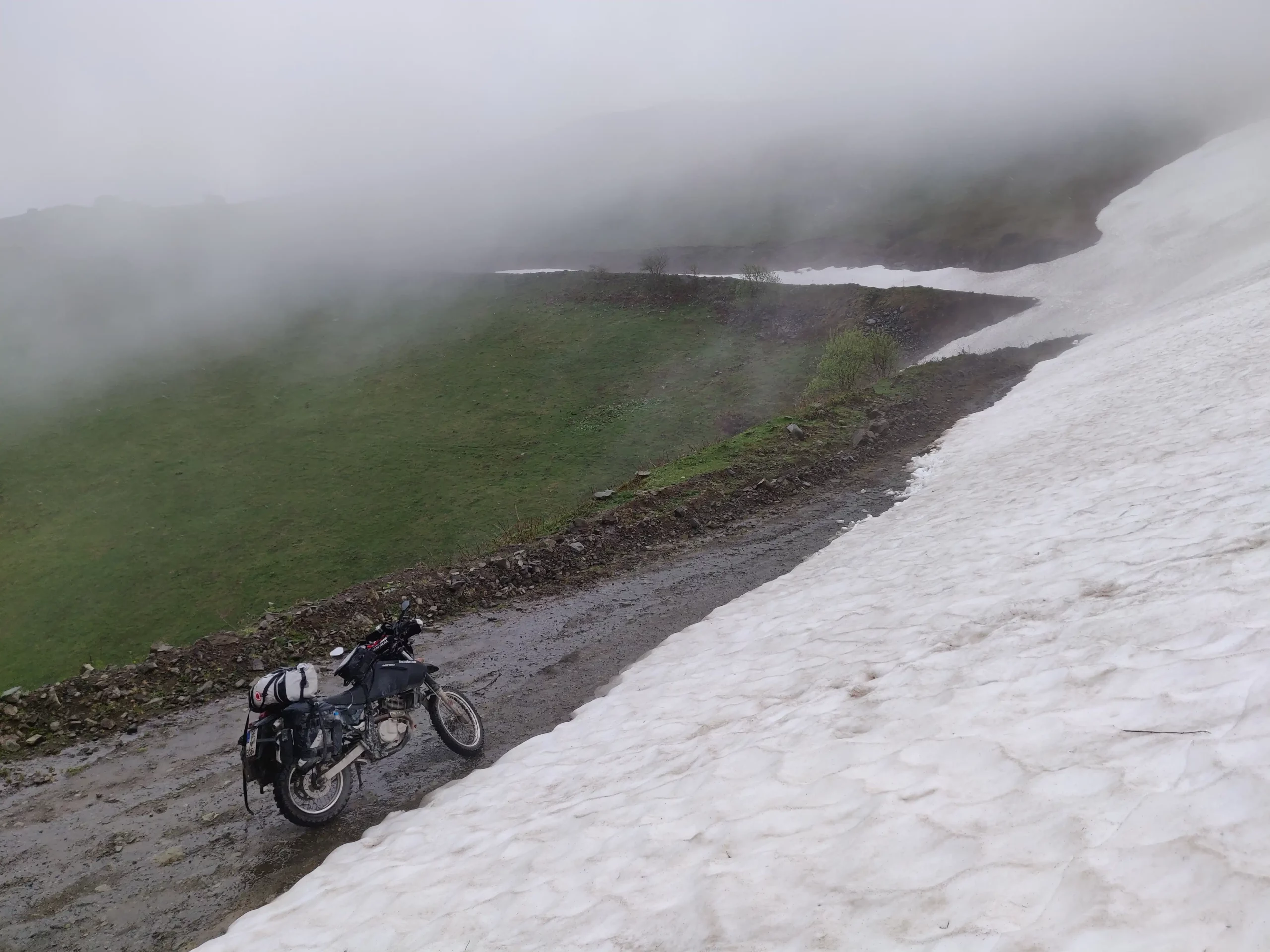
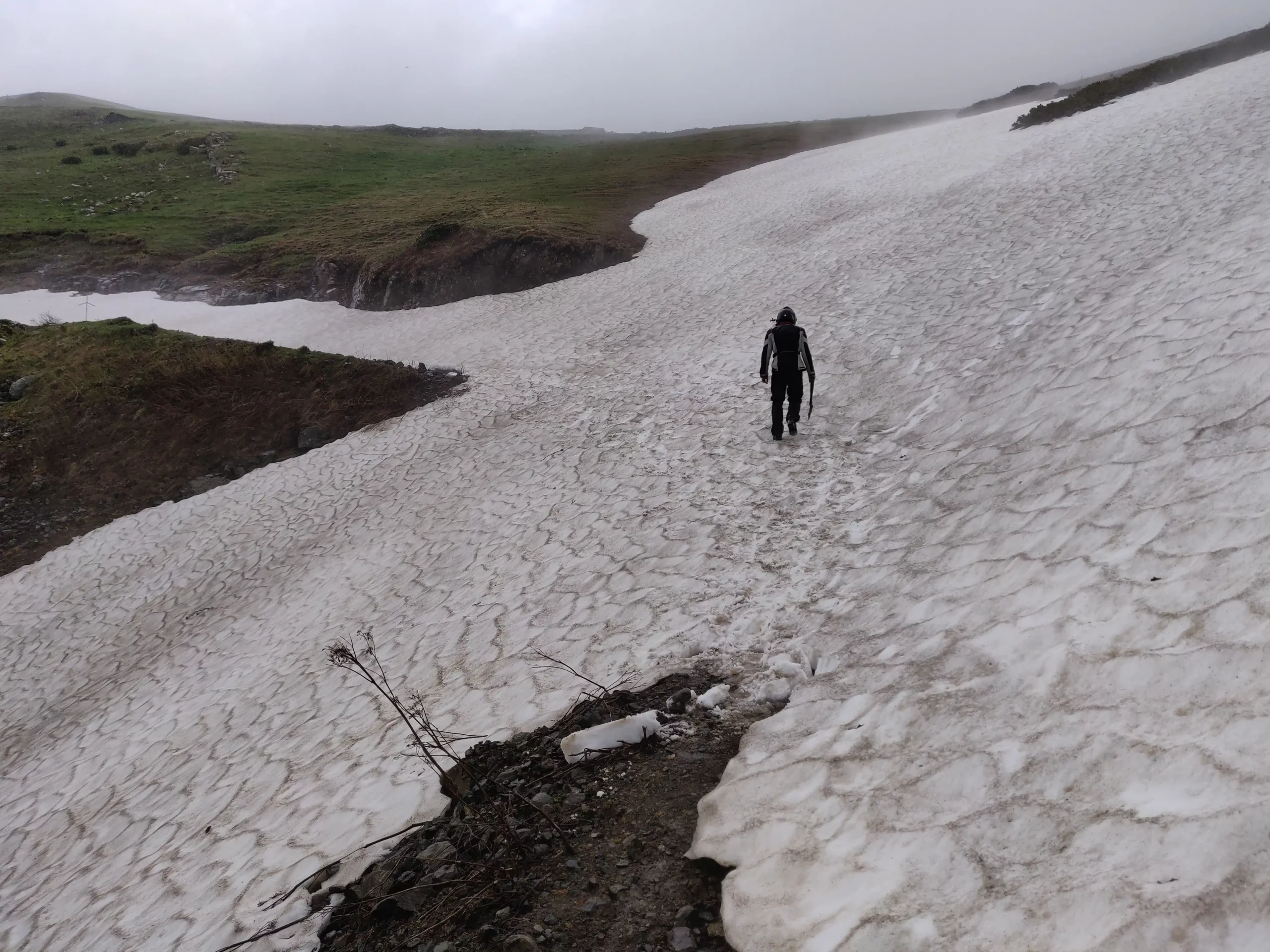
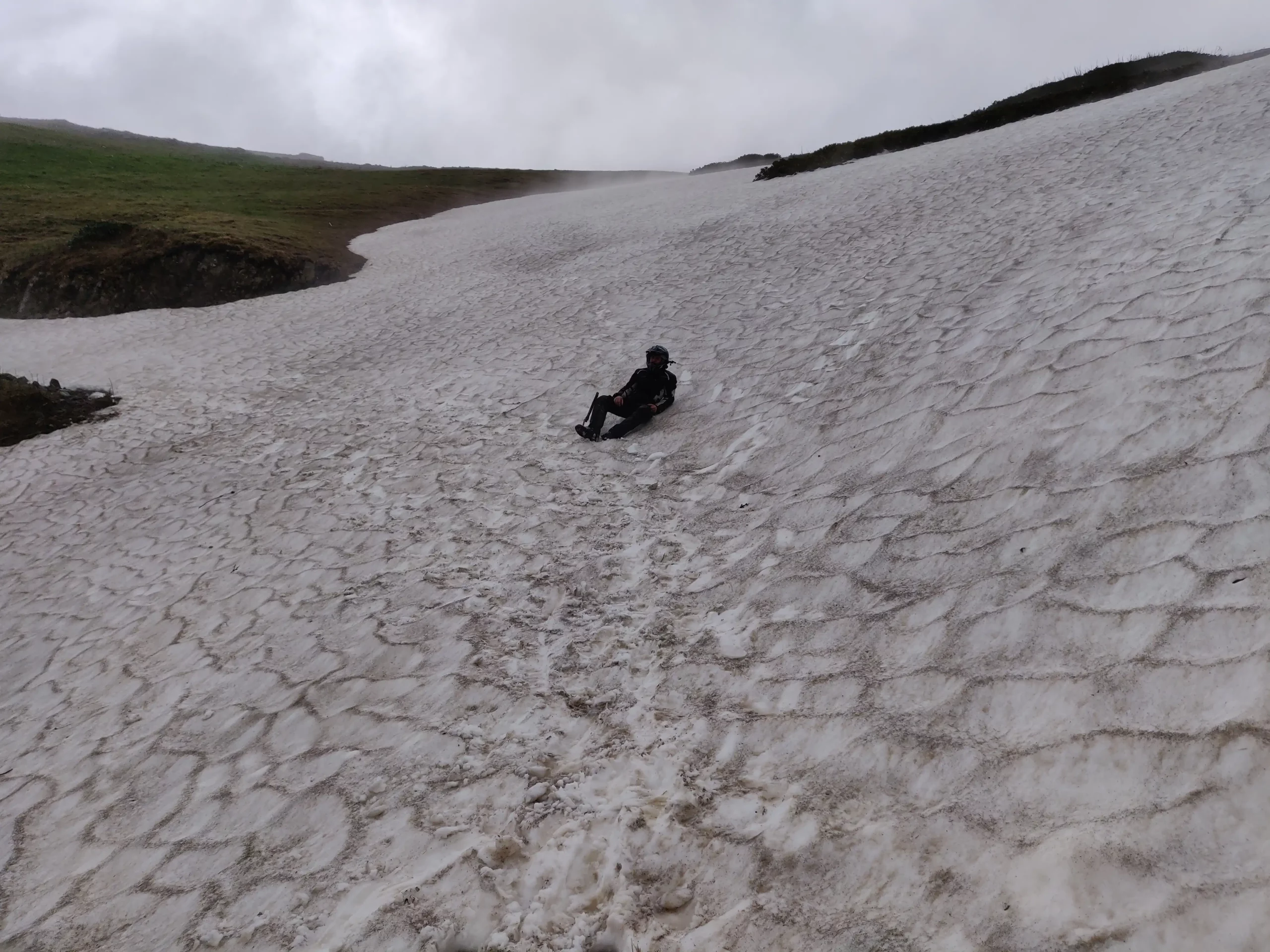

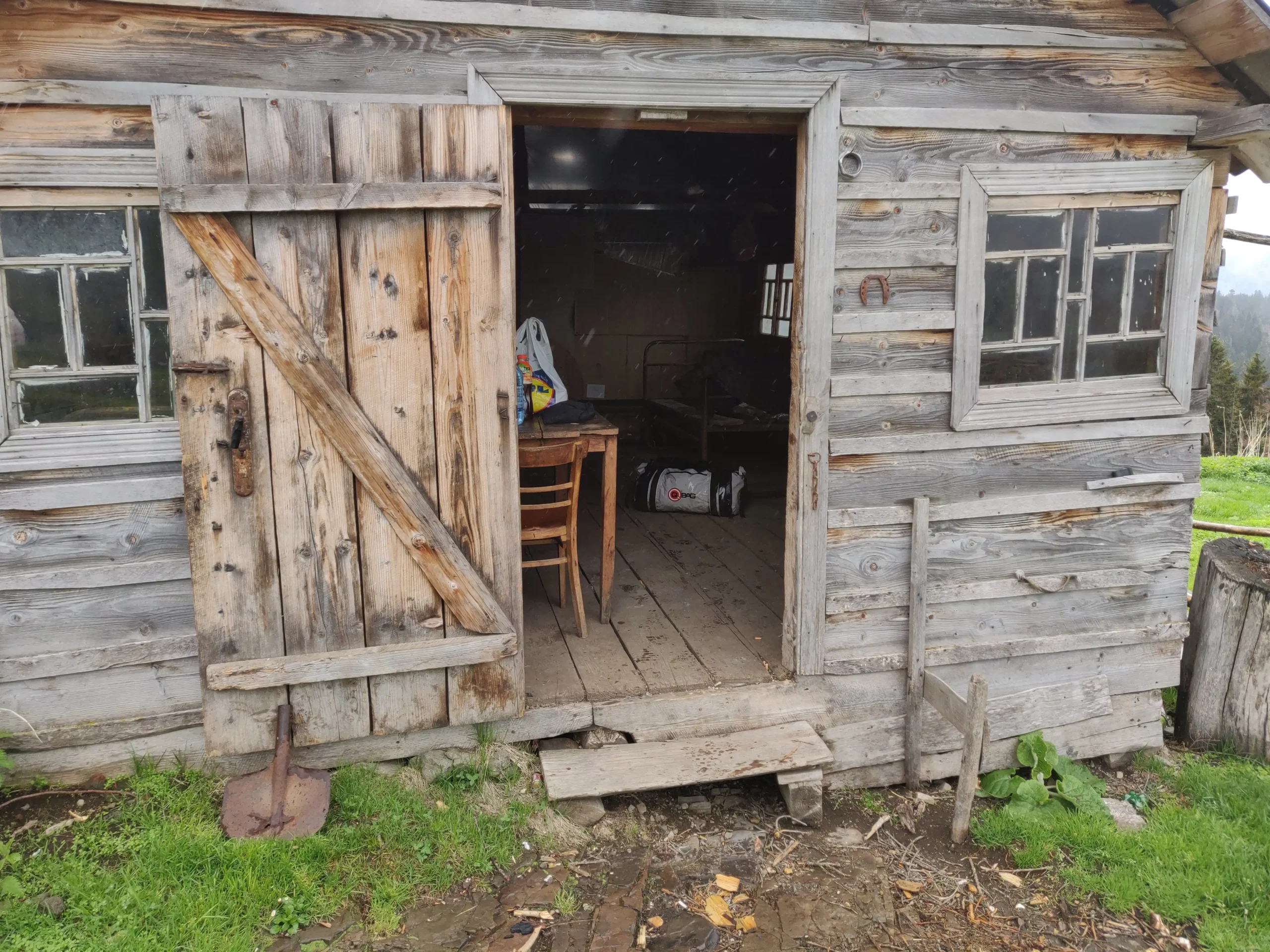
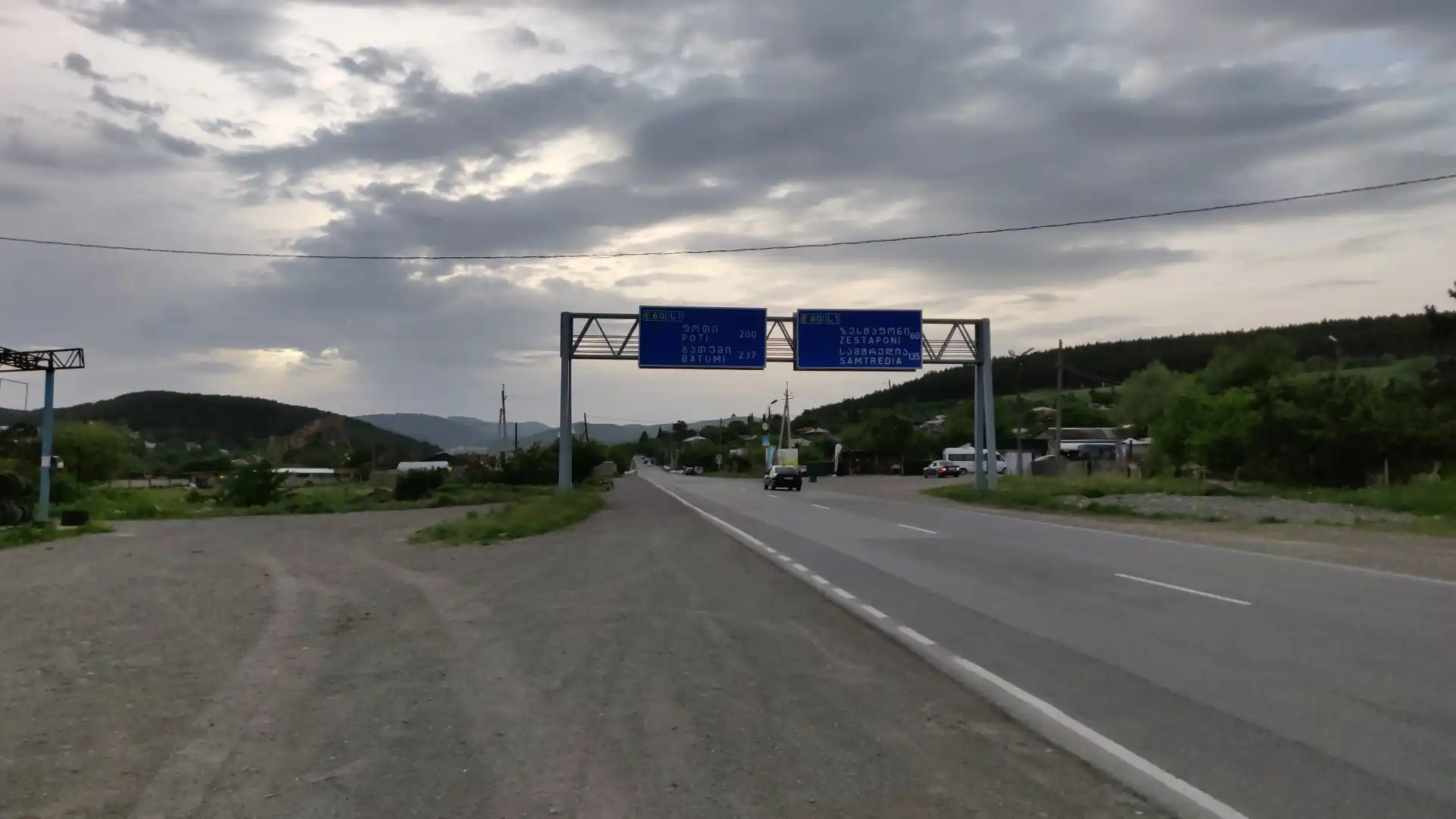

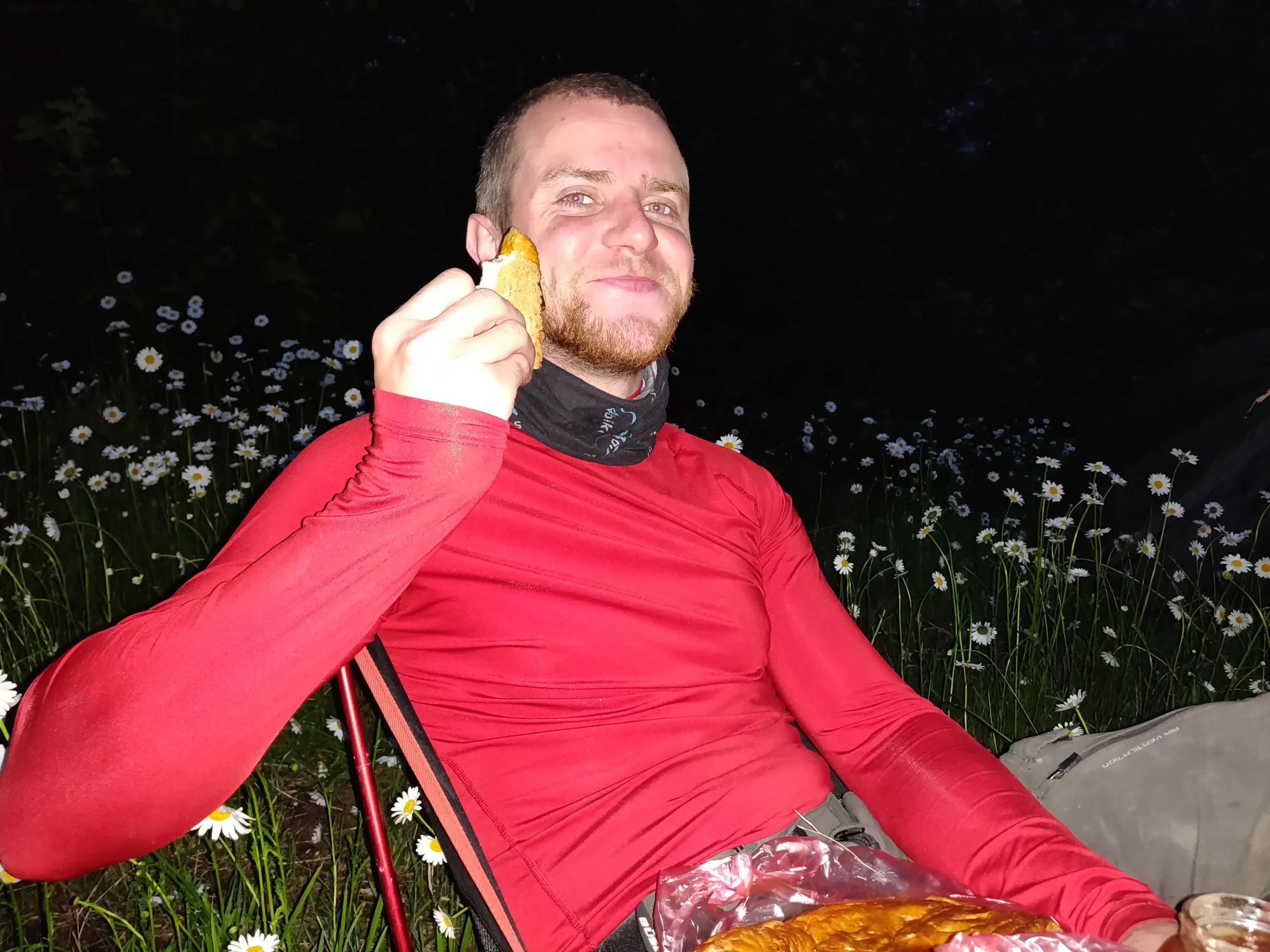
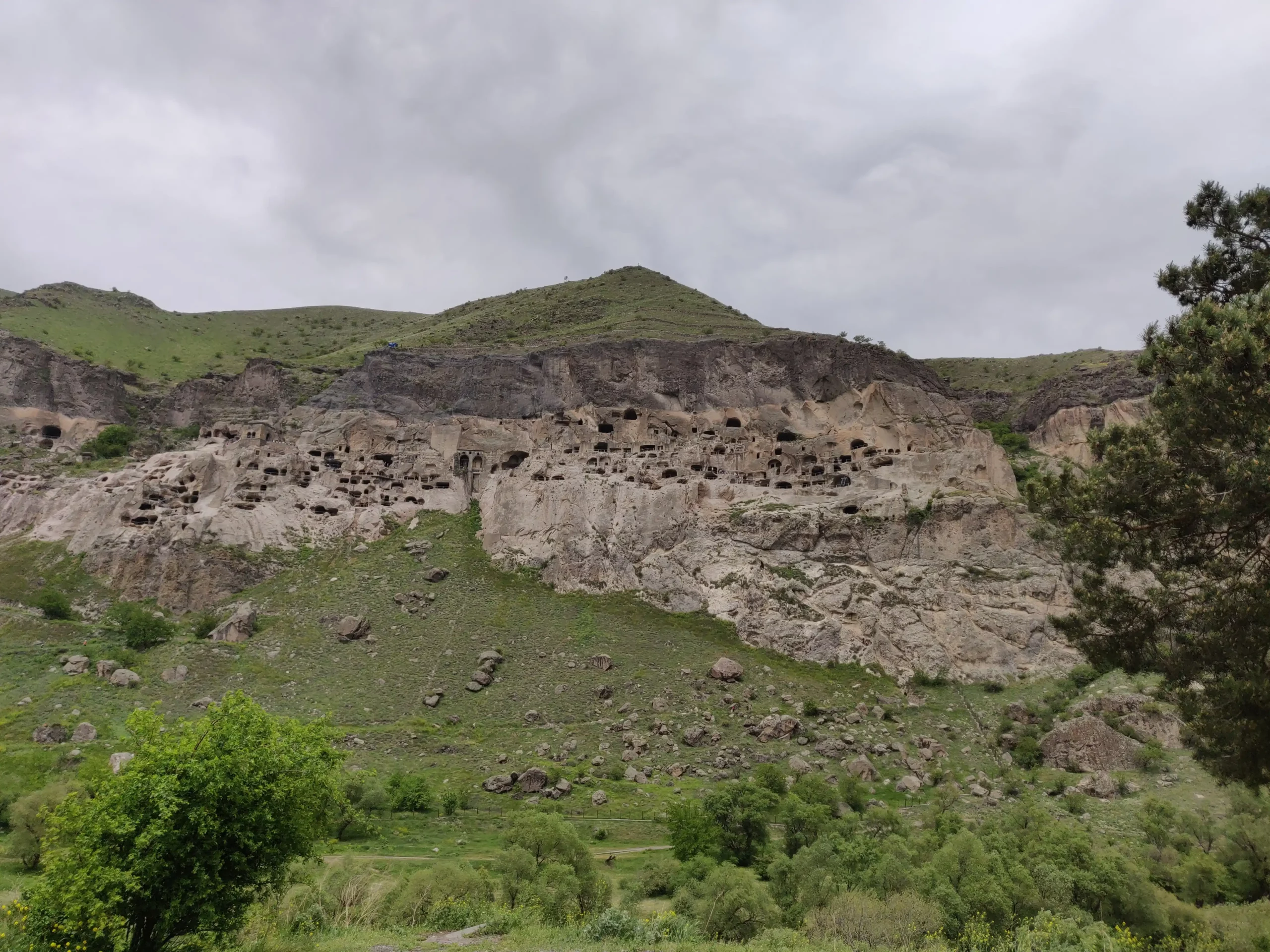
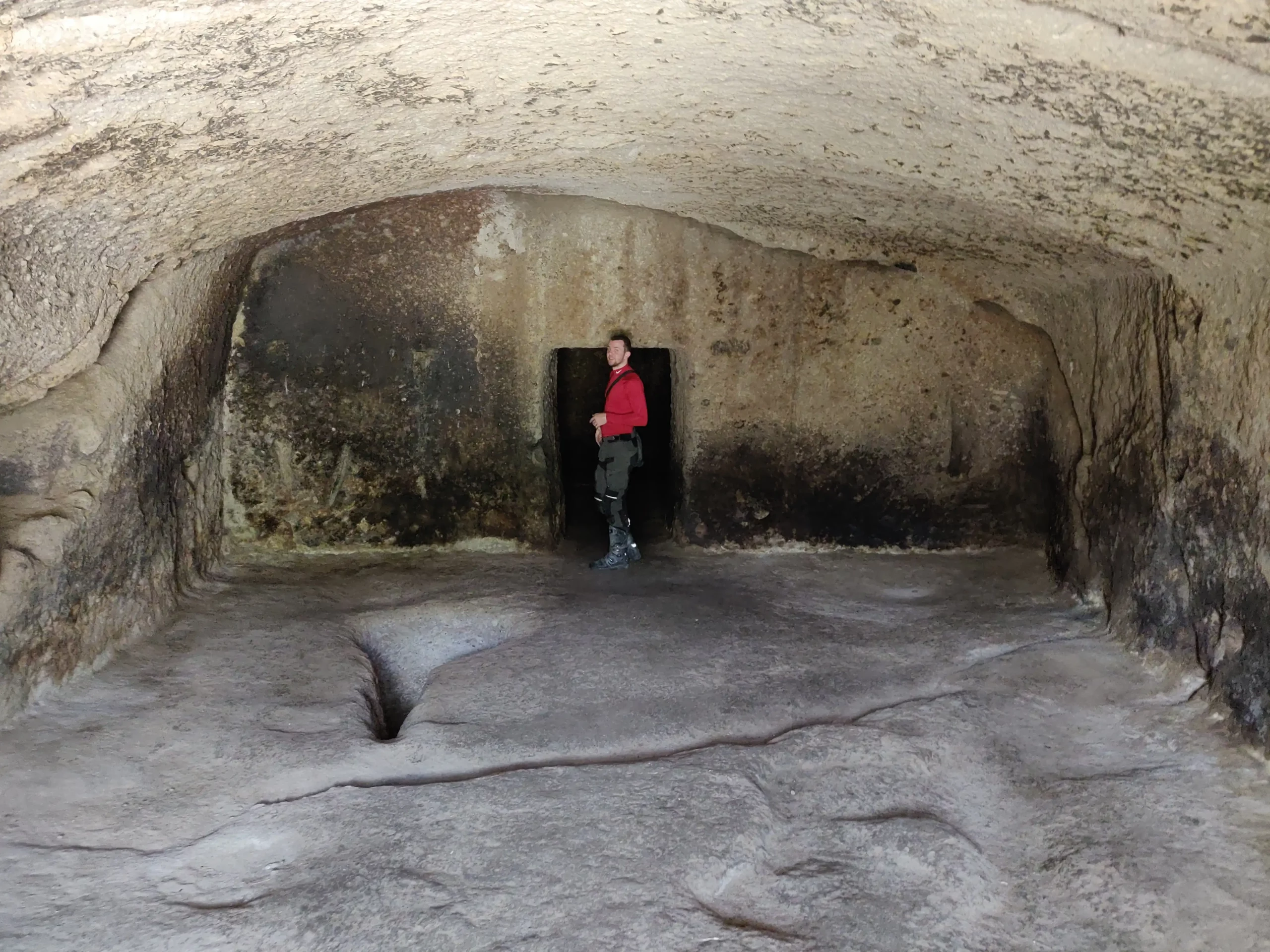
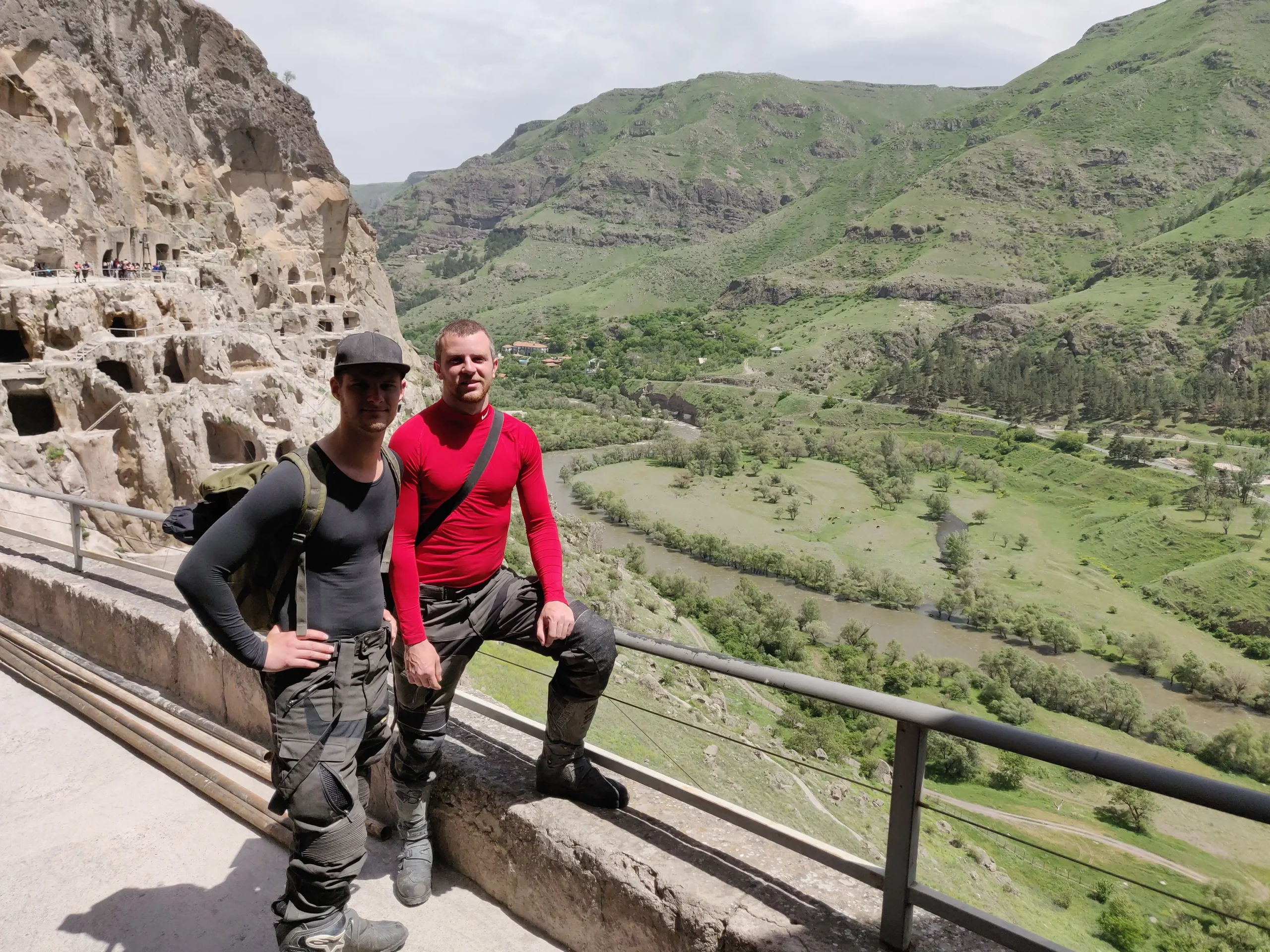
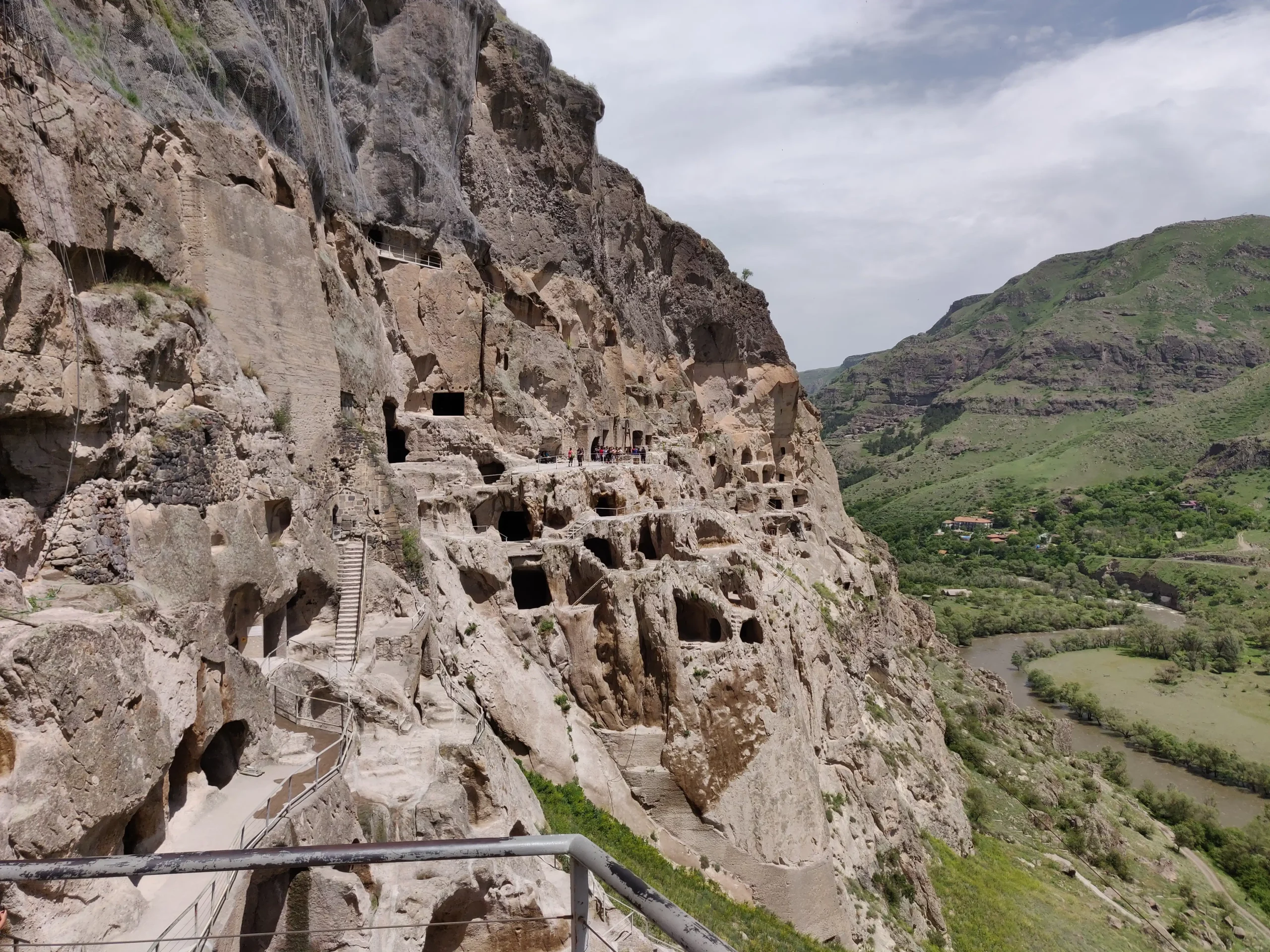


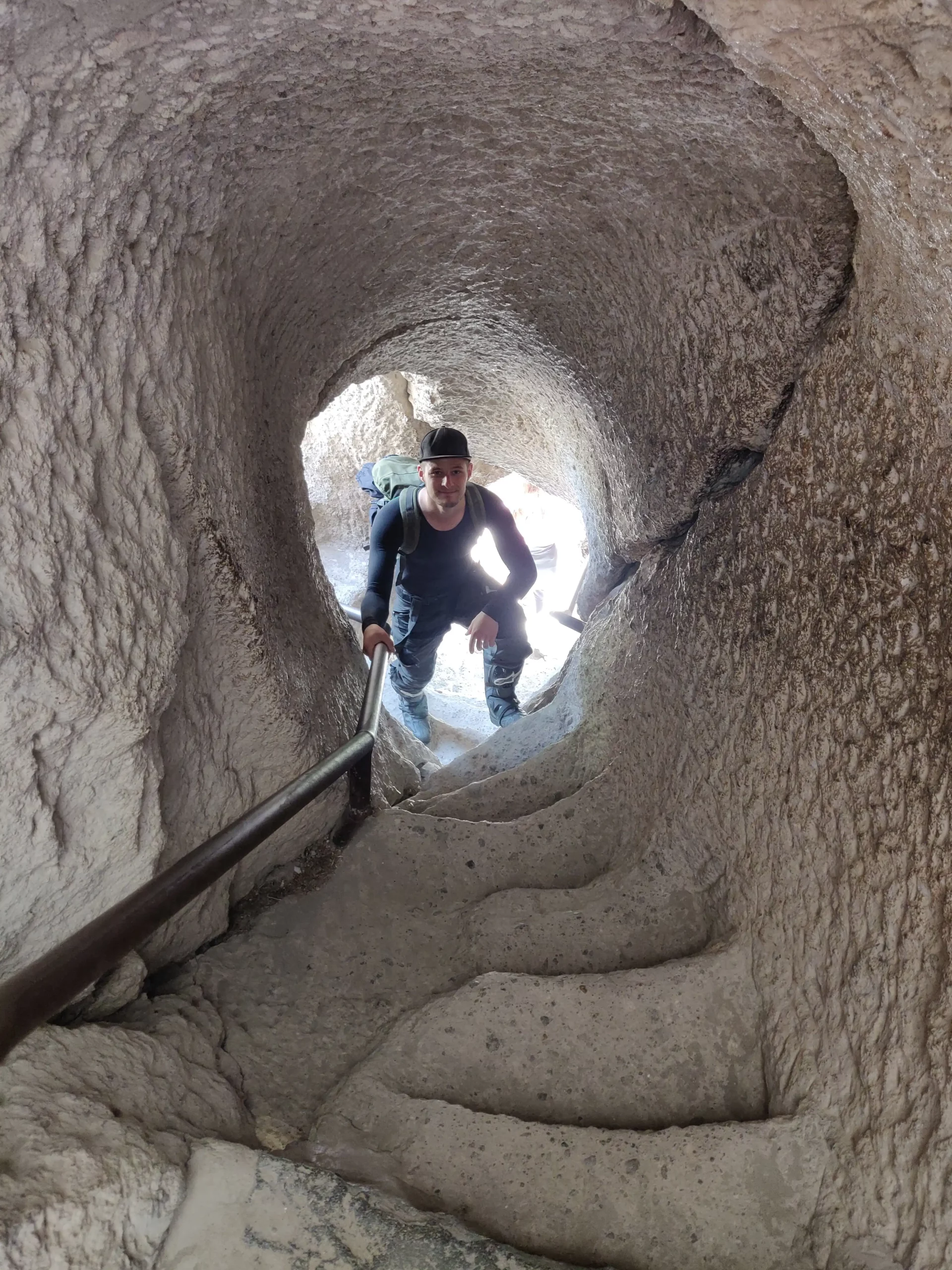
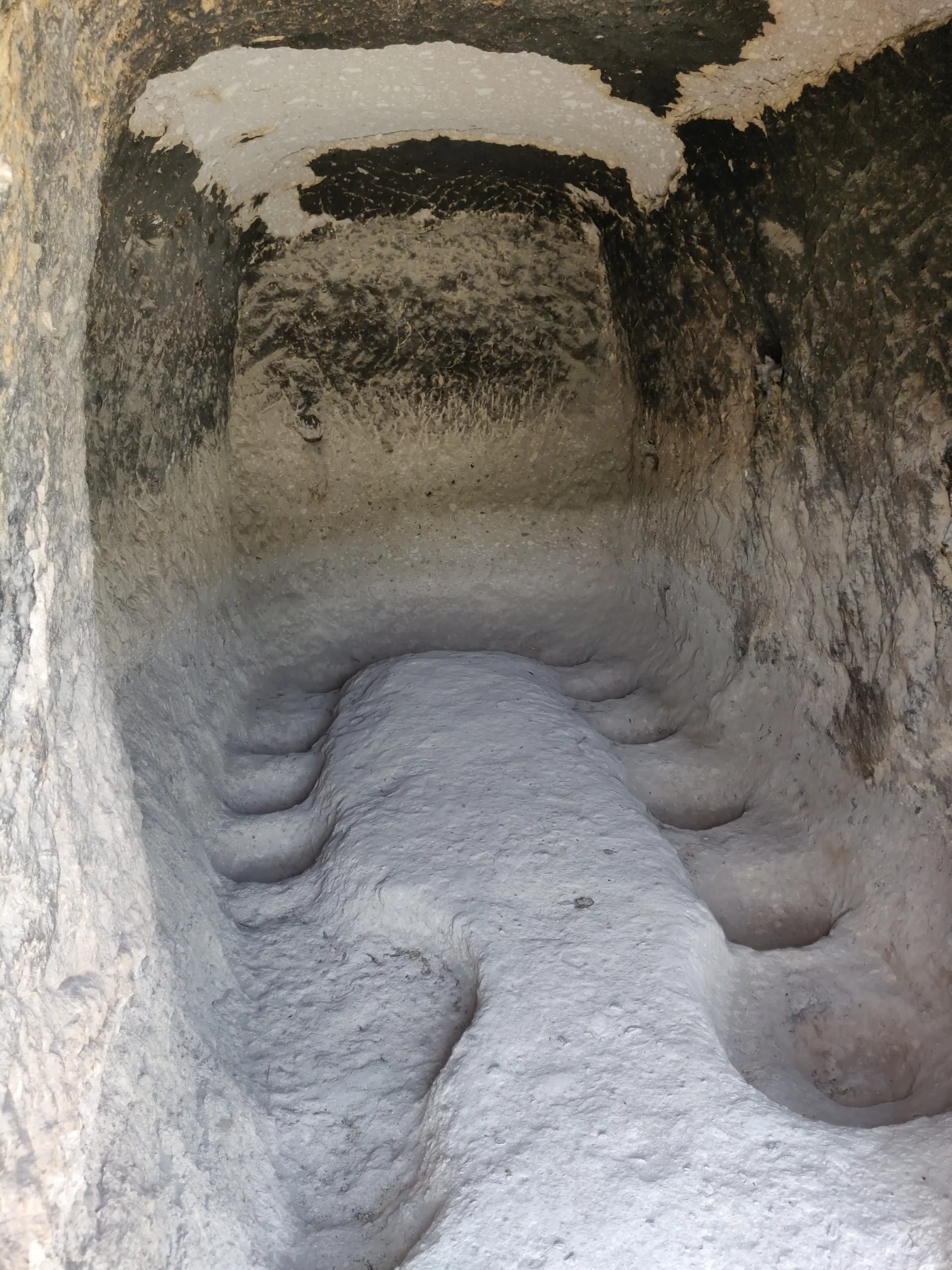

2 comments on “Svaneti, the land of towers – Georgia”